The road to Machu Picchu; the Salkantay trek unguided
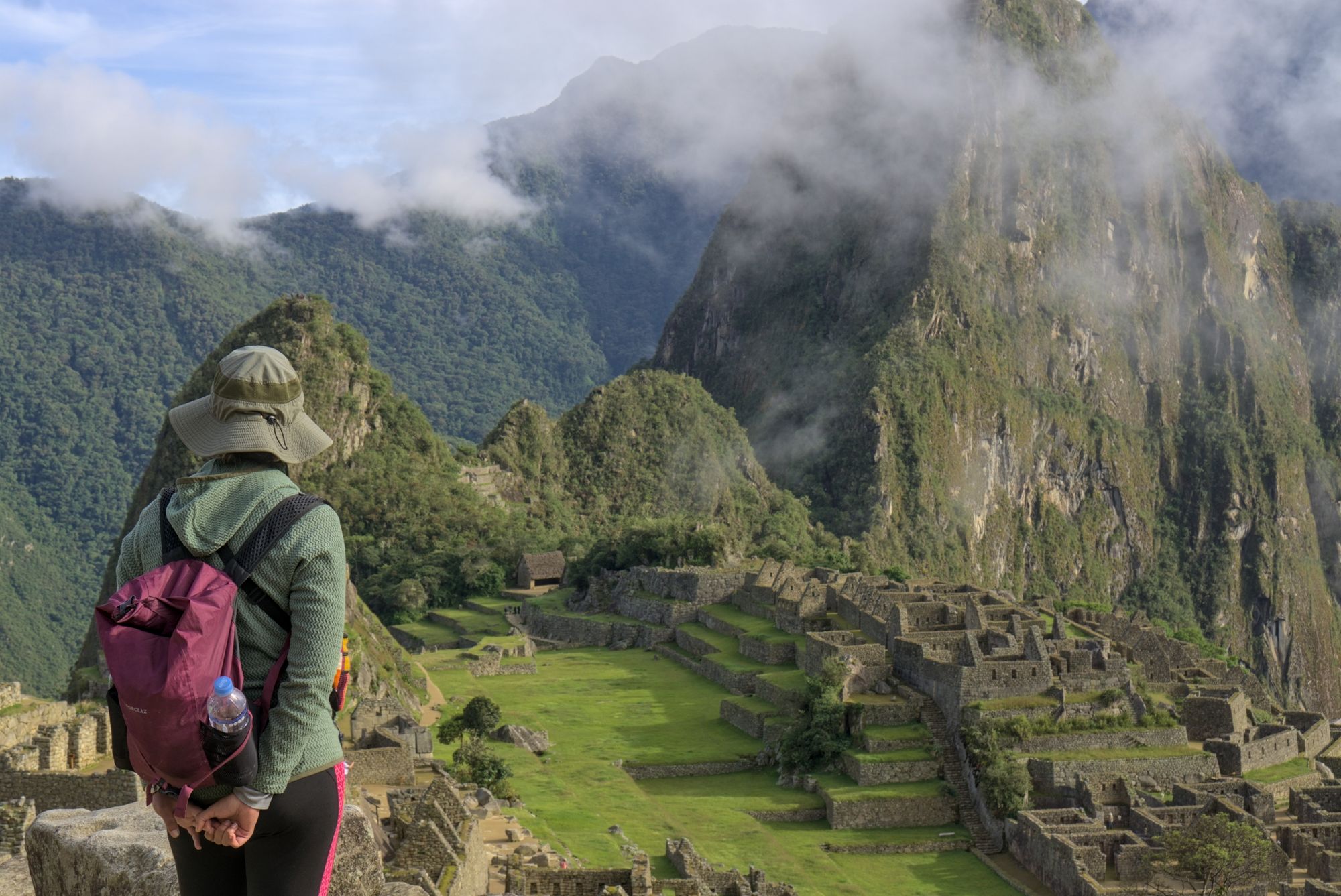
Salkantay trek overall hike info
Total distance covered: 84.13 km
Total duration walking: 33 hrs 34 mins
Total days: 5
Total ascent: 3166m
Total descent: 4777m
Difficulty: Moderate - Difficult for seasoned walkers, might be Very Difficult for beginners due to length and altitude of certain areas
We arrived in Peru a few days ago and have been spending time in the UNESCO world heritage city of Cusco/Cuzco. These past few days we have visited multiple attractions of the city, tried Peruvian cuisine and have been familiarising ourselves with the fascinating history of the Incan empire. One of the first sites we visit are the ruins of Sacsayhuaman; resting at an altitude of 3700m, it is the highest point in Cusco. It is a 40 minute walk from the centre with all encompassing views of the city along the way. The ruins of Sacsayhuaman are an impressive feat of engineering. It does not take an interest or understanding of stonework or construction to appreciate the ingenuity of the craft. The massive boulders of limestone are cut to such precision and joined together so tightly that no mortar is required to hold it in place. Although now only 40% of the original structure remains, in its prime it would have served as both a political and military base as well as a juncture for religious ceremonies.
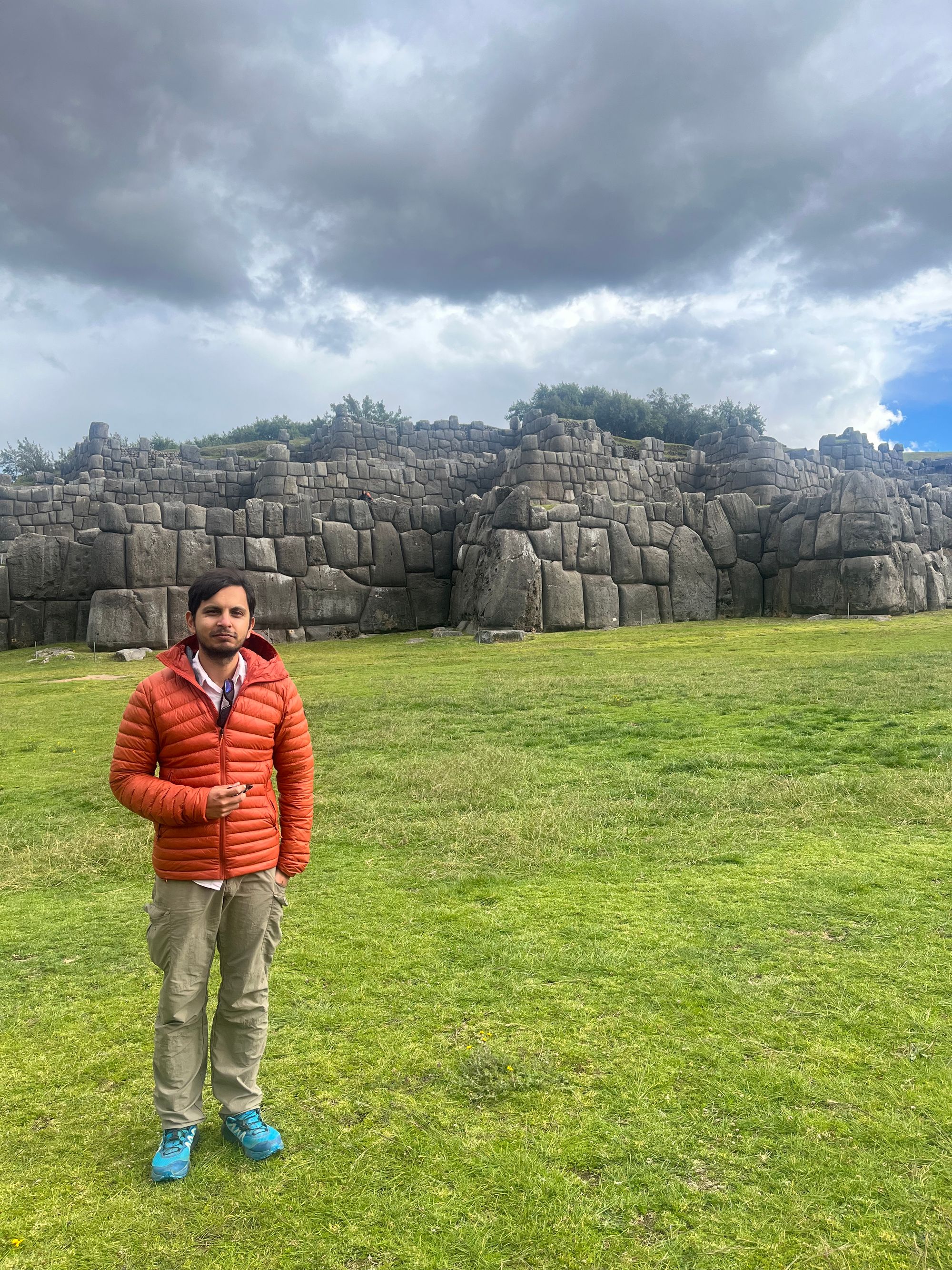
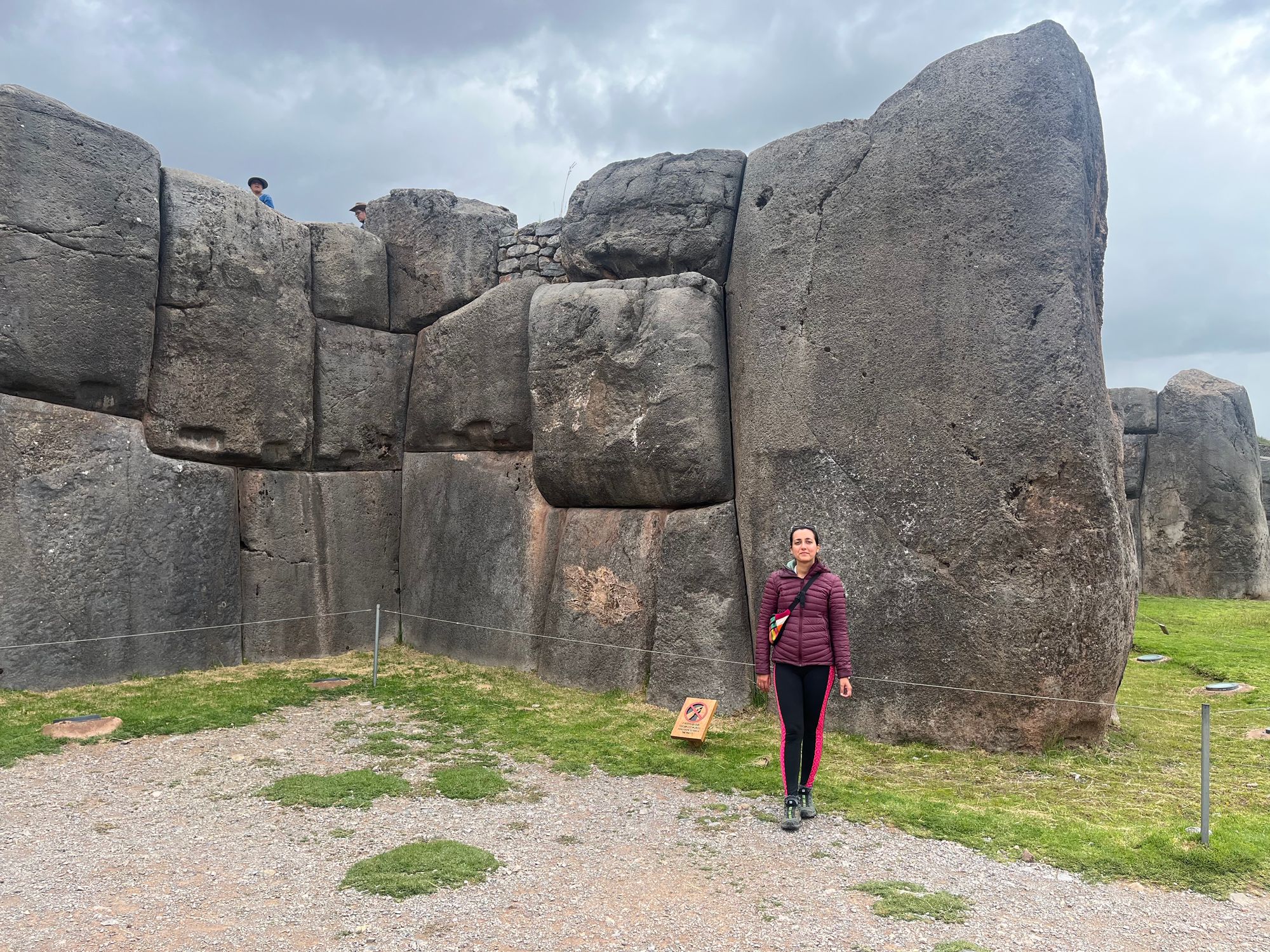
We have tickets to enter Machu Picchu six days from today which means stocking up on stuff for our 5 day long hike including snacks and lunch items, renting trekking poles, loading route maps onto our smart watches and packing our rucksacks. Coincidentally, today marks 100 days of us being on the road and we are now about to embark on the adventure of lifetime. The thought is as nerve-racking as it is exciting.
Day 1 - Cusco to Soraypampa & Lake Humantay
Lake Humantay Hike Info:
Distance: 5.10km round trip
Duration: 2 hours 48 minutes
Ascent: 449m
Descent: 378m
Difficulty: Easy to Moderate (due to altitude and steepness of the incline)
It is the year 1200 AD, a group of settlers arrive in the warm valley of Southern Peru, and the city of Cusco is founded. Their leader calls himself Sapa Inca, which in Quechua translates to 'Lord without equals'. His followers will come to be known as the Incas. Over the years, the Inca tribe expands greatly and in the year 1438 AD, Pachacuti Inca Yapanqui, a conqueror known for his fearlessness and unmatched skill becomes their new leader. Under his reign the Incan empire stretches to the whole of South America. He builds irrigation channels and terraces and the road system flourishes. In 1440 AD he builds the city of Machu Picchu, high up in the clouds. . .
Today we set off on the road towards Machu Picchu via the Salkantay trek. (Thanks to the following blog which inspired us to do this hike unguided and helped us plan our route). To start our journey the plan is to take a collectivo (shared van/taxi) to Challacancha and then complete a 2-hour walk from there to our first stop of the day, Soraypampa. We hail a taxi from the centre of Cusco to the collectivo stand at 6am, hoping to make an early start. The early start because, not only is it good hiking etiquette, but because we are doing the hike unguided and do not have pre-booked accommodation, we need to reach town before the hotels run out of vacancy.
Since collectivos are shared, they only leave once full and it takes its sweet time to fill up this morning. We wait in the van for 2 hours (!) and are finally on the move by 8am, exactly the start to our day we were hoping for.
We drop off most of the passengers on the way and reach Mollepata when the driver offers to drop the remaining bunch of us directly to Soraypampa instead of Challacancha, as we are all doing the unguided Salkantay trek. After some back and forth, we all finally agree and reach Soraypampa by collectivo around 12:00pm.
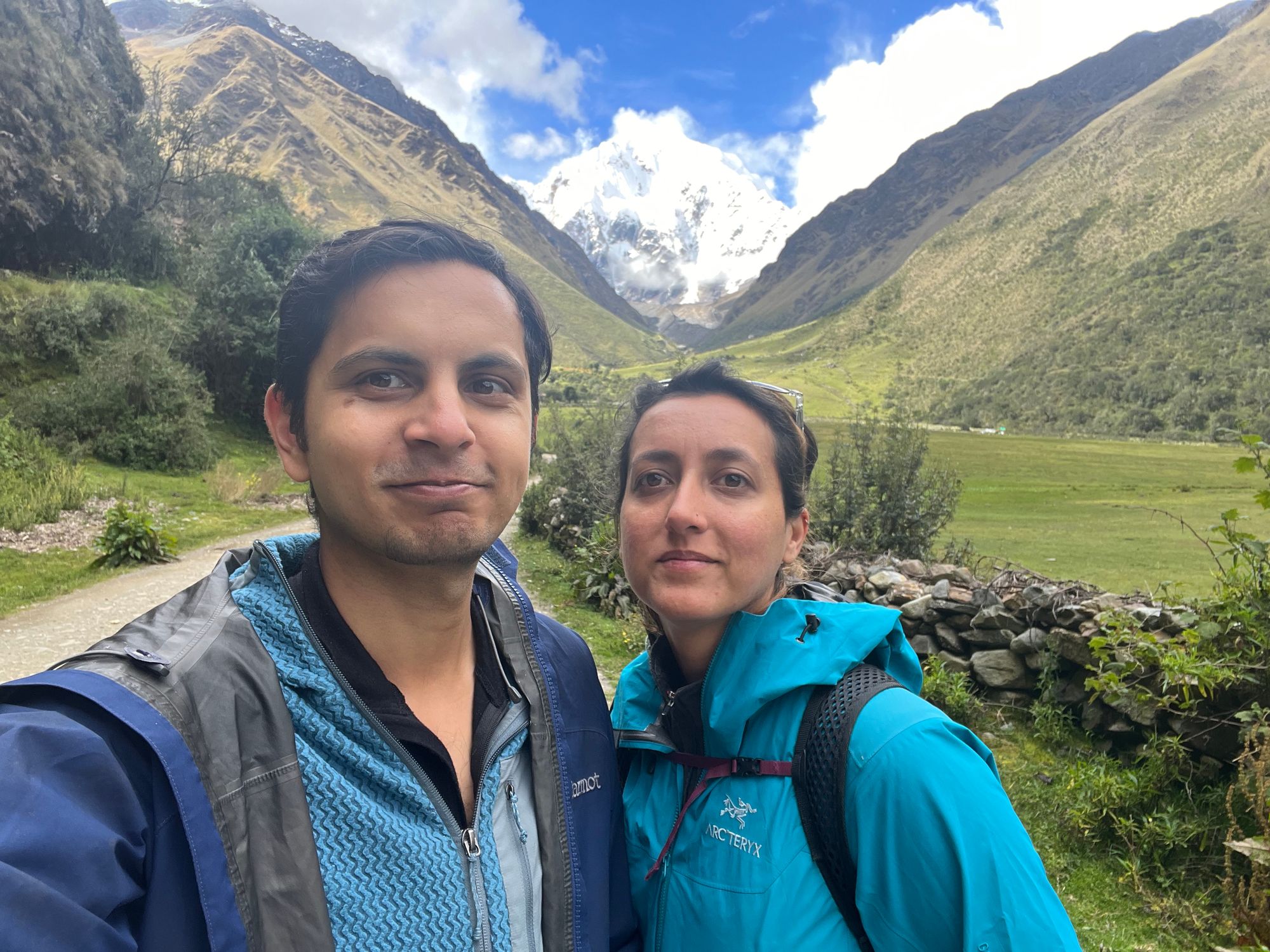
We immediately begin asking around for rooms, the couple of hotels we find are all fully booked with groups doing organised tours. My worst fears start taking shape, what if we do not find any rooms? We do not even have any camping gear on us! Where will we sleep? Luckily, a short walk from the parking lot we find Soraypampa Hotel, which is available and ends up being our accommodation for the night. The accommodations on this route, offer dinner and breakfast (some, at an additional cost others inclusive) and can do packed lunches for the next day if you pay extra. We are carrying enough cans of tuna, a bottle of pesto, and lots of salty and sweet snacks to keep us energised for the next four days. But just for today we think a warm meal would do us good, so after a quick lunch at a nearby restaurant we go for a side hike as part of the Salkantay trek to Lake Humantay. It is a short but steep hike, and turns out to be harder than we'd expected, mainly due to the altitude. We spend a good hour at the destination, take lots of pictures, enjoy snacks and soak in the views before heading back to our cabin to rest for the night.
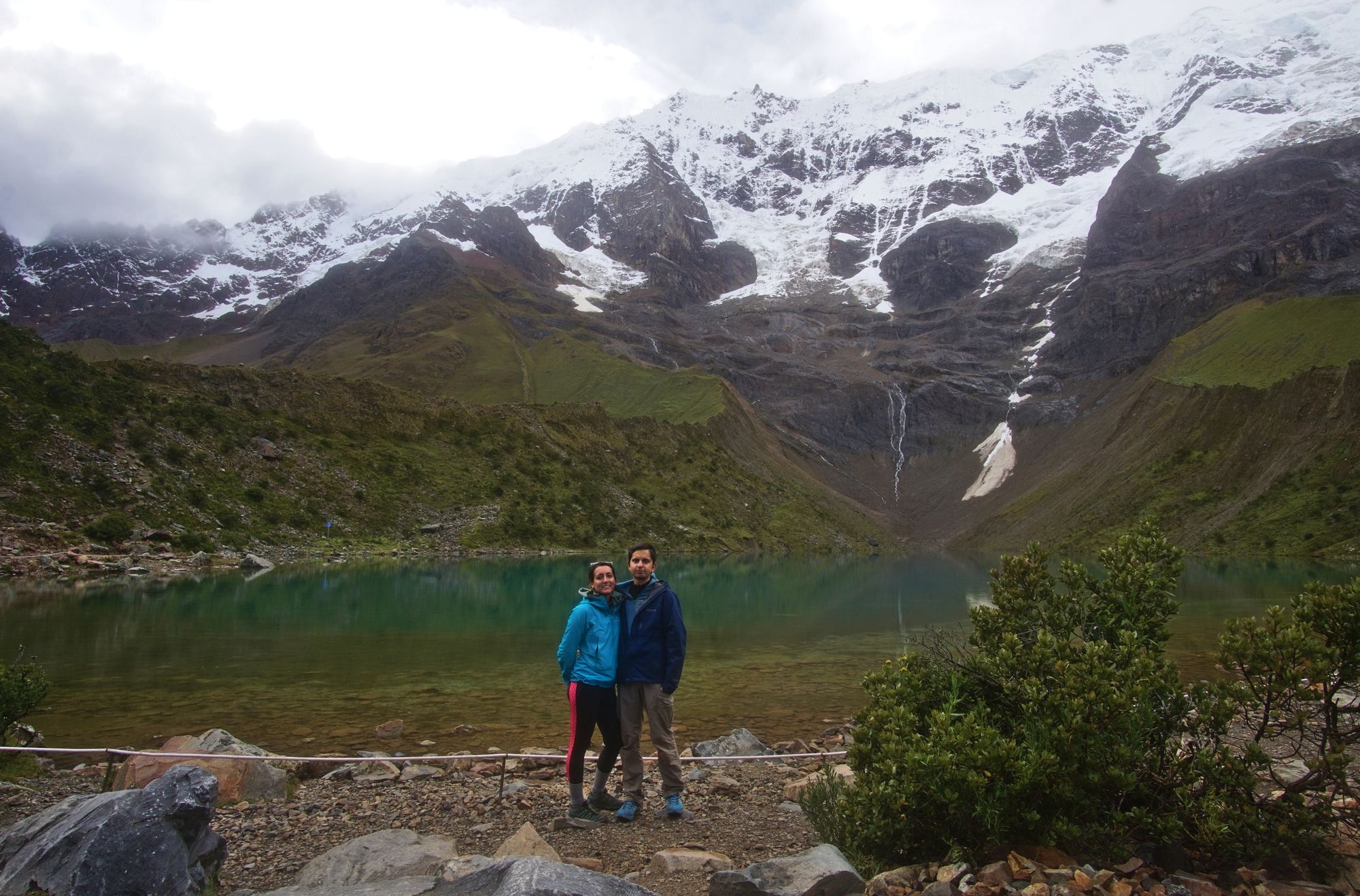
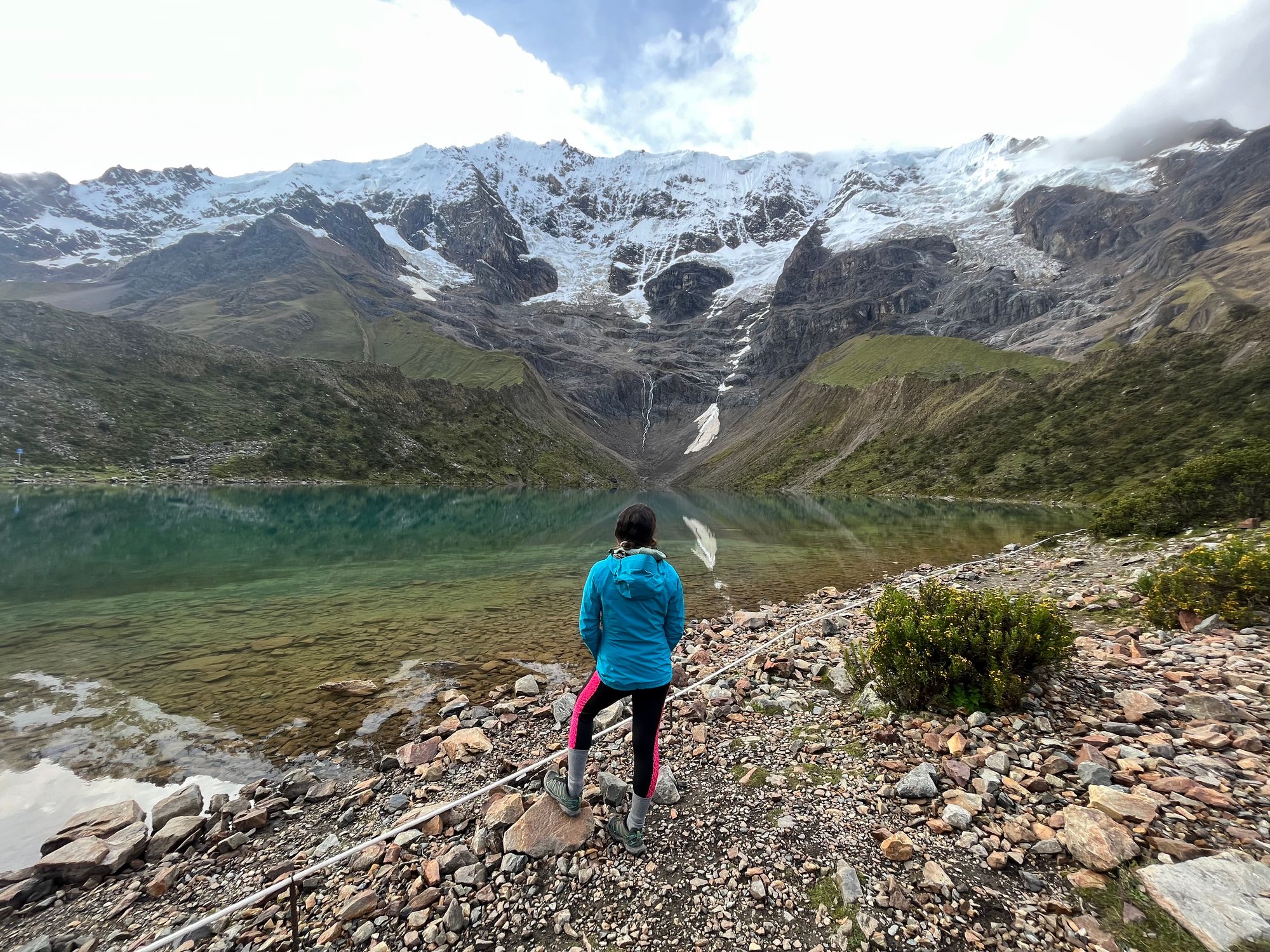
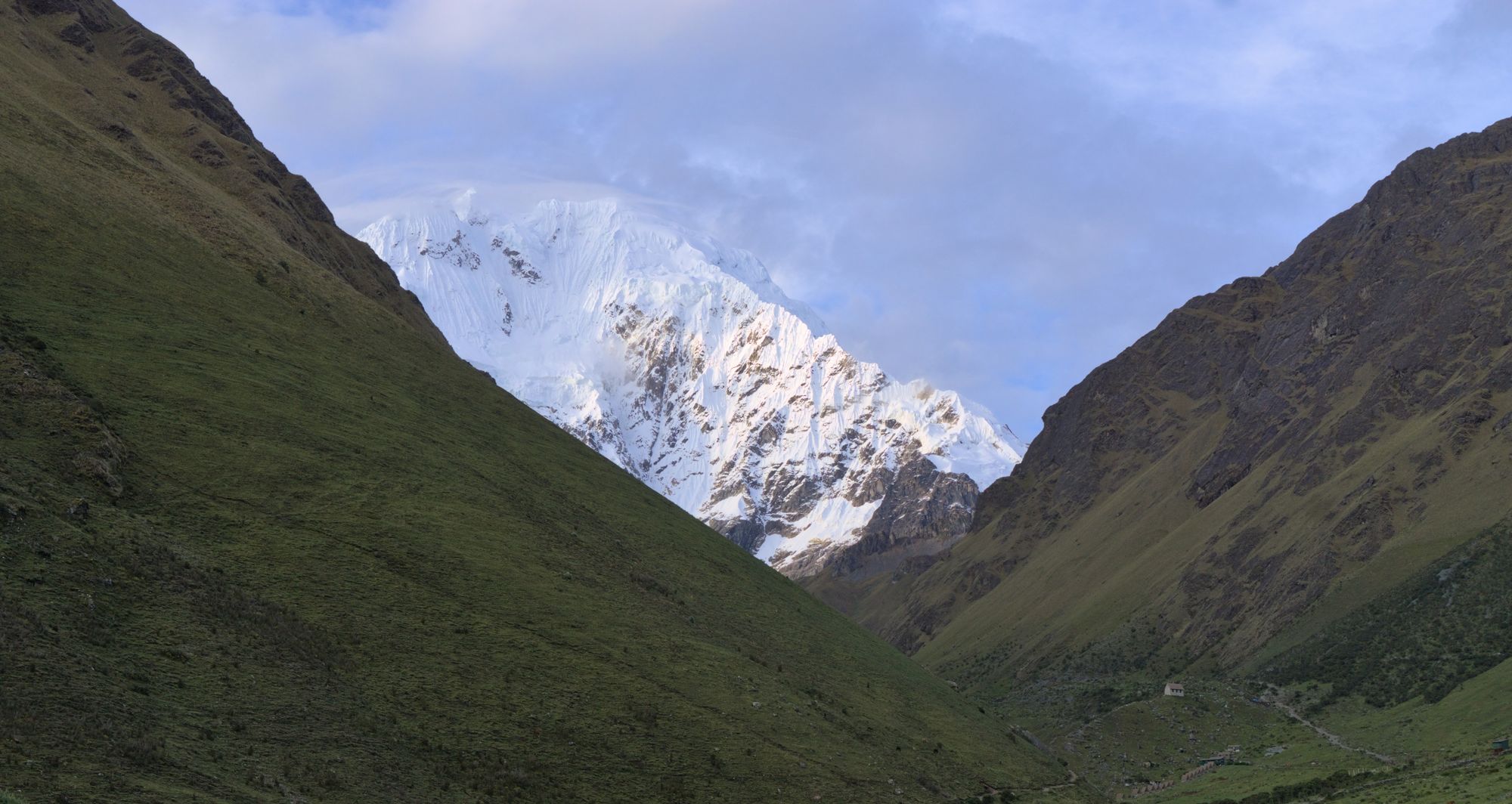
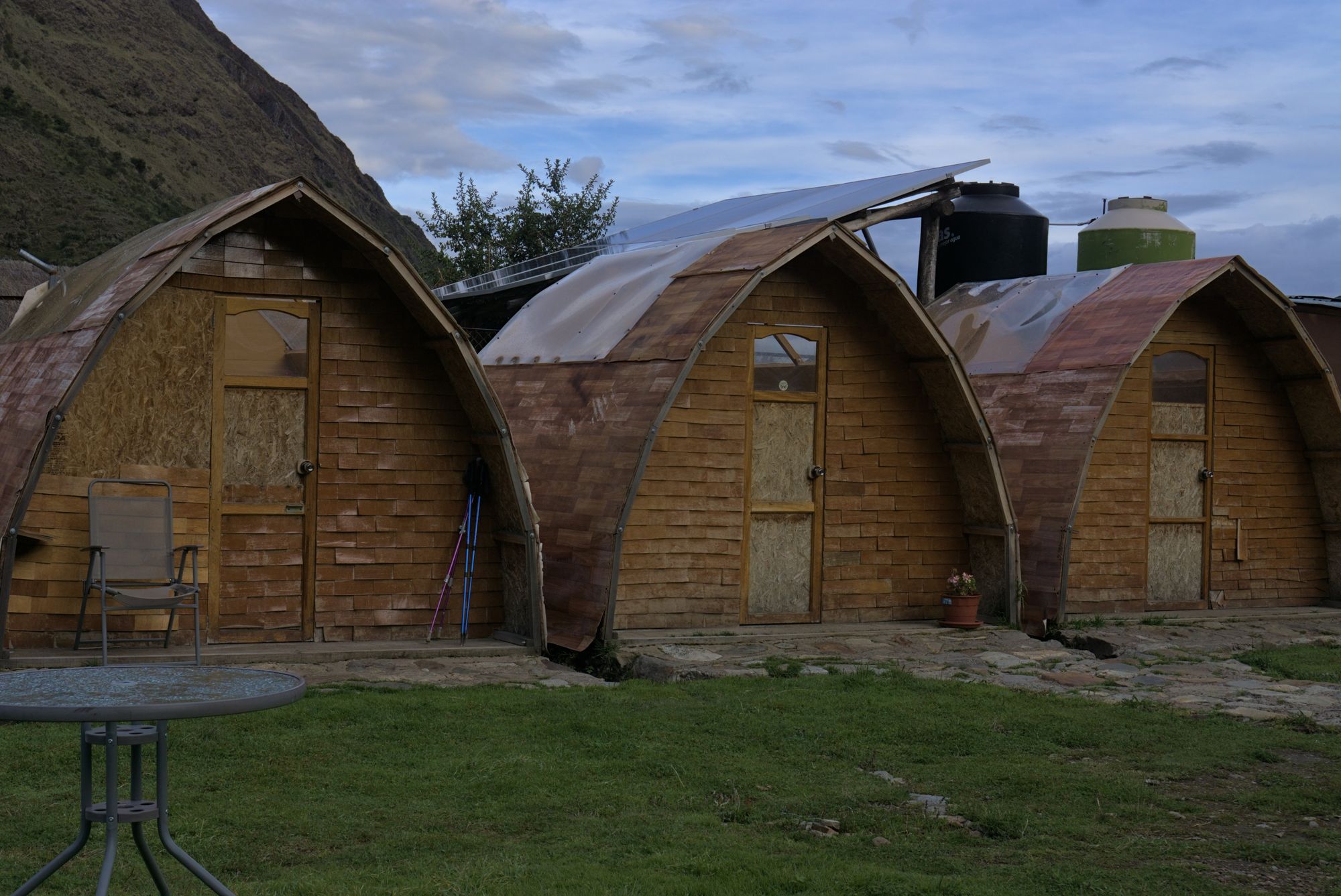
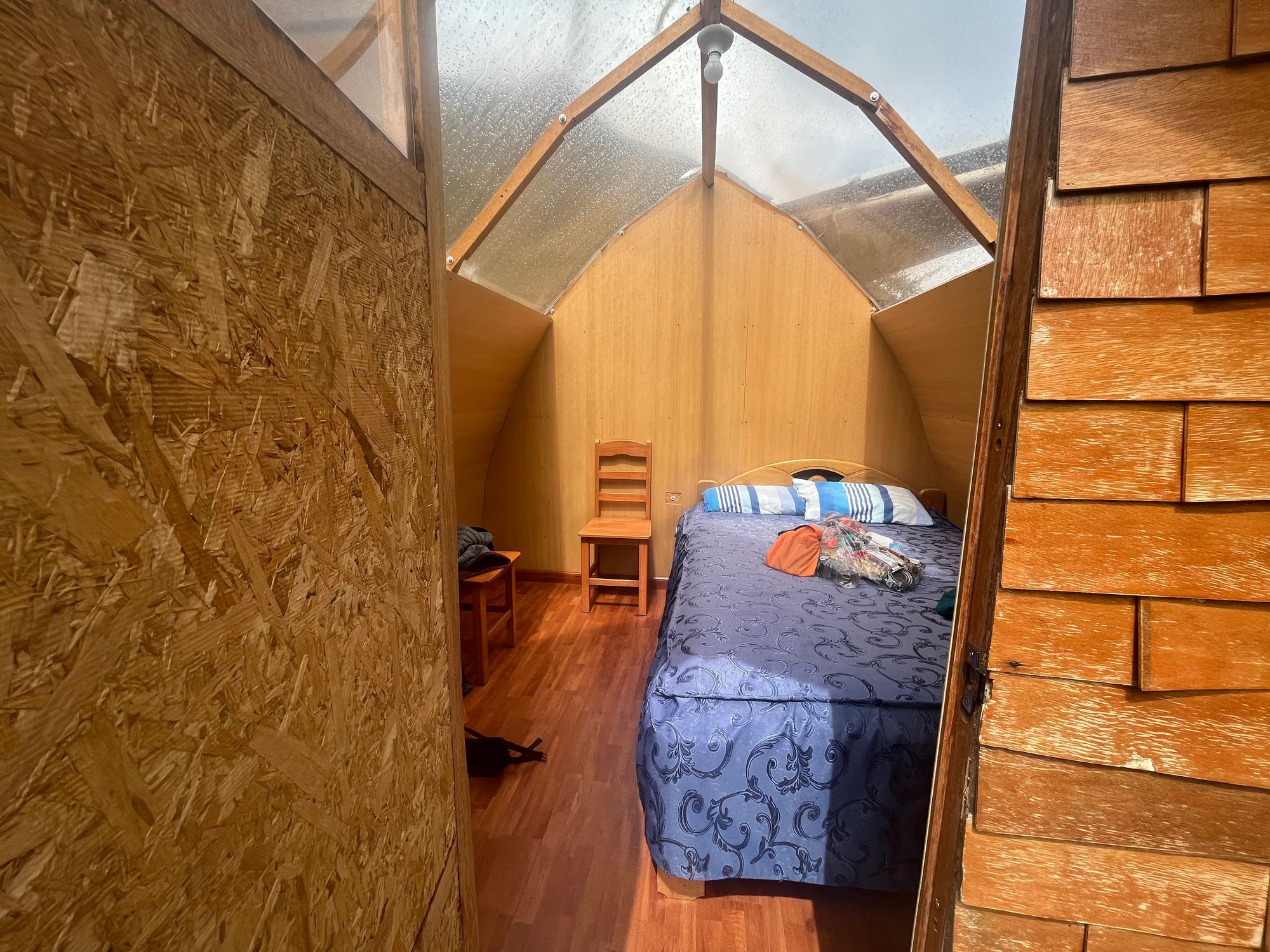
Day 2 - The Salkantay Pass
Salkantay Pass Hike Info
Distance: 20.56km
Duration: 8 hours 57 minutes
Ascent: 729m
Descent: 1026m
Difficulty: Difficult due to length, incline and altitude
Tupac Inca Yupanqui, Pachacuti's son becomes the emperor after his demise and continues his expansion of the Inca empire. In 1493 AD Huayna Capac, Tupac's son takes the reign and under his rule the Incan empire reaches its peak. In 1500 AD Huayna Capac dies suddenly of a mysterious illness, it is a disease brought on by the European ships that have anchored near South American shores, but the Incas have yet to encounter them. A funerary procession holding Huayna Capac's mummified body makes its way to the city of Cusco. Upon their arrival the once beautiful city is now a calamitous display of death and destruction. The plague has weaved its way to the capital. Without a leader and in the throes of ruination, there is civil unrest and a war breaks out. . .
According to the route map, today will be our longest and most difficult day of hiking, as we are due to make the crossing through the Salkantay pass which lies at an altitude of 4600m. We have coca tea for breakfast to help us with the altitude and set out 06:15am. It is a gentle yet tedious incline towards the pass until at one point the road forks into two, the map we are following is taking us along the trail on the right, the trail on the left is a mule path which we see many guided groups taking.
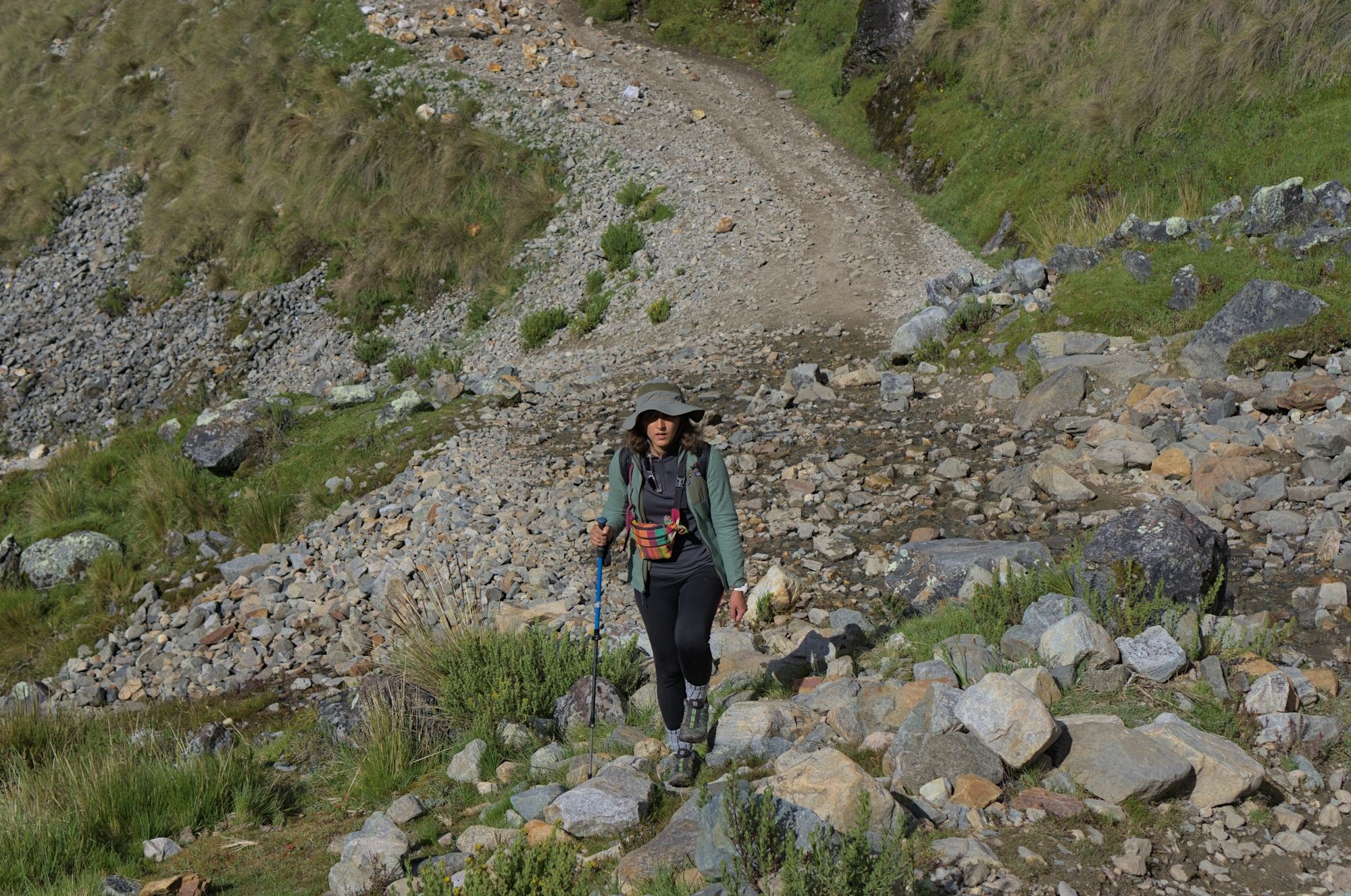
I am skeptical at first because almost everyone seems to be taking the trail on the left, however, we run into a local on the way who informs us that both paths collide at the end. So we follow his advice and our instincts and soon find out that the incline is much gentler on this path and also much quicker.
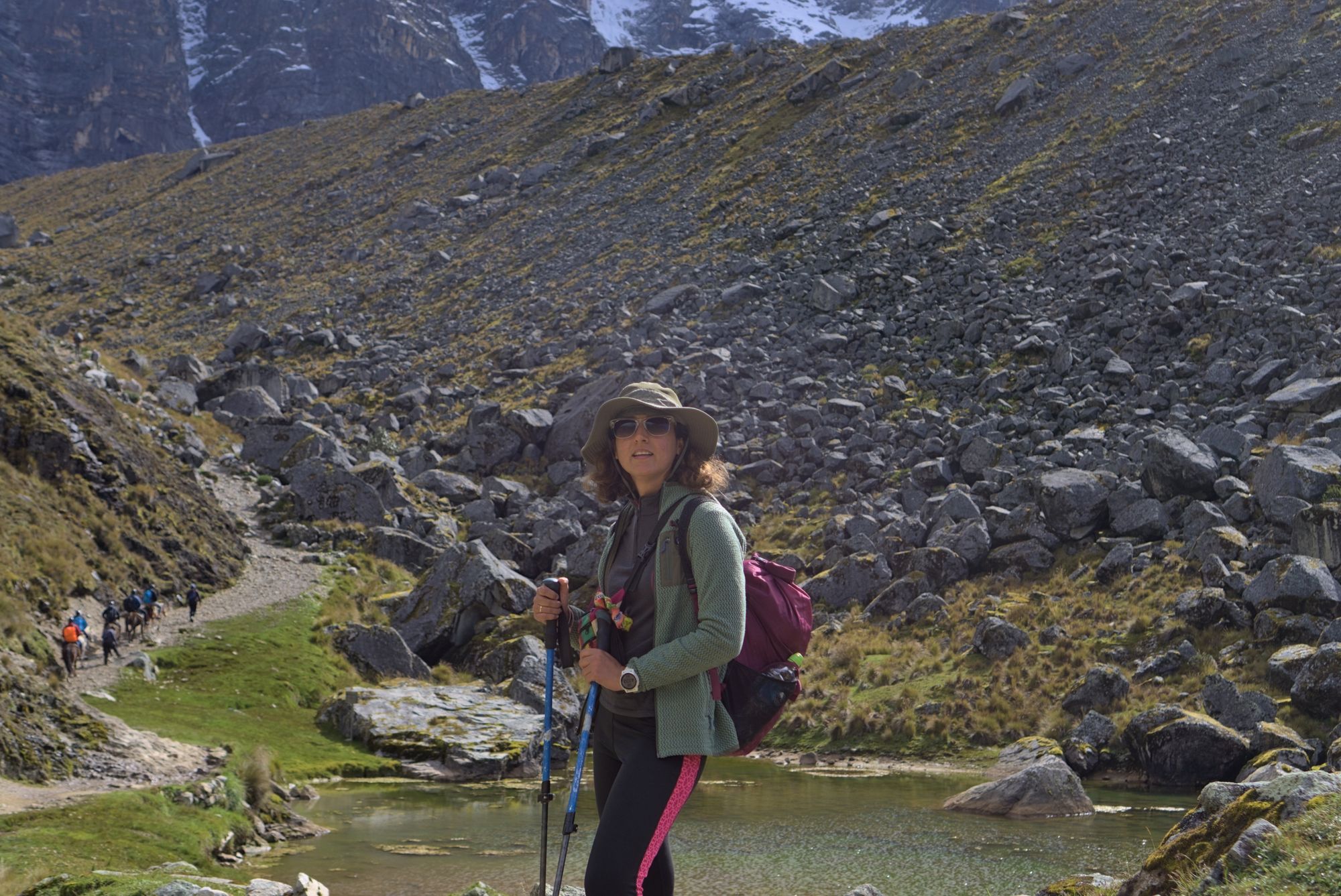
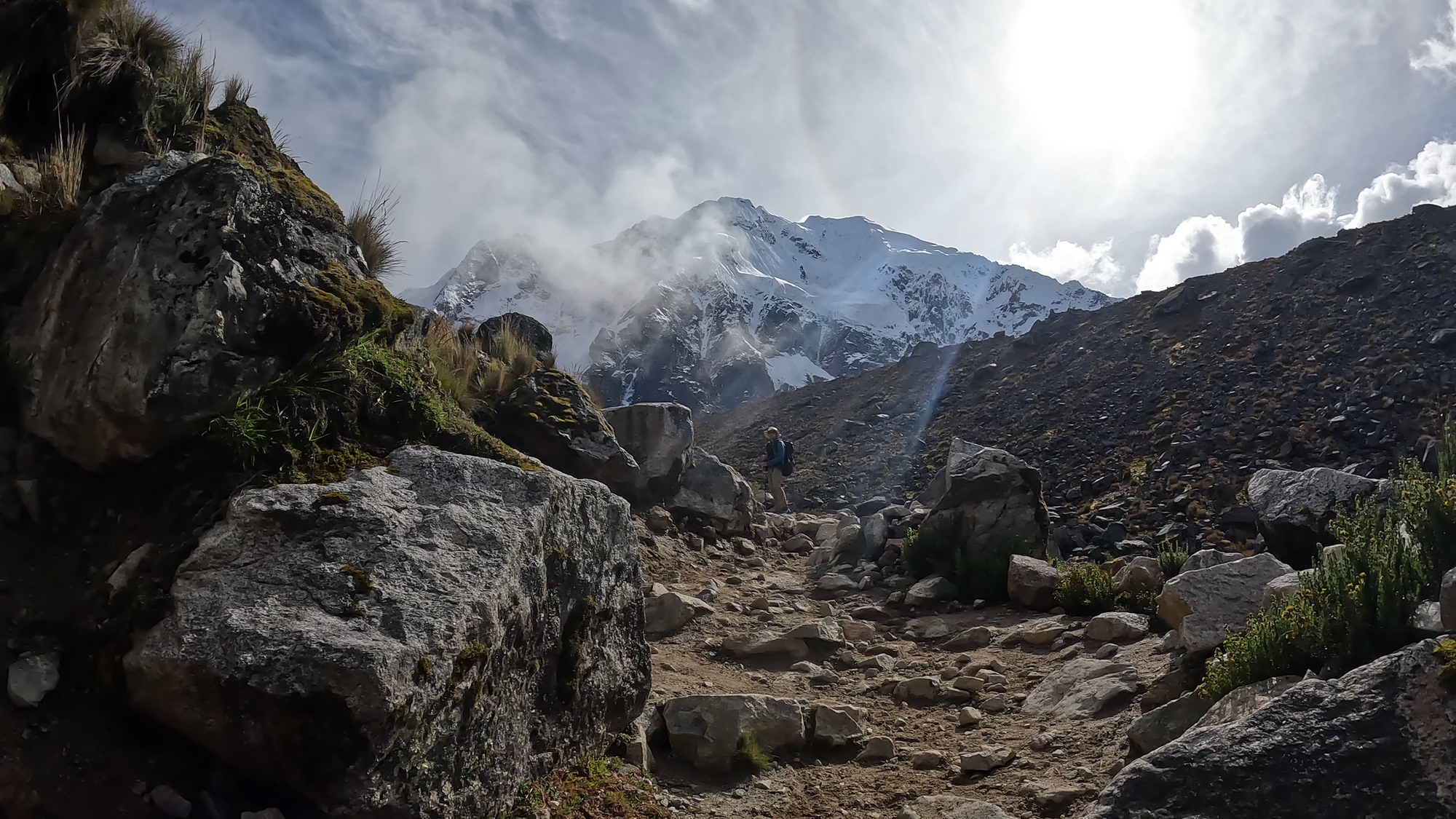
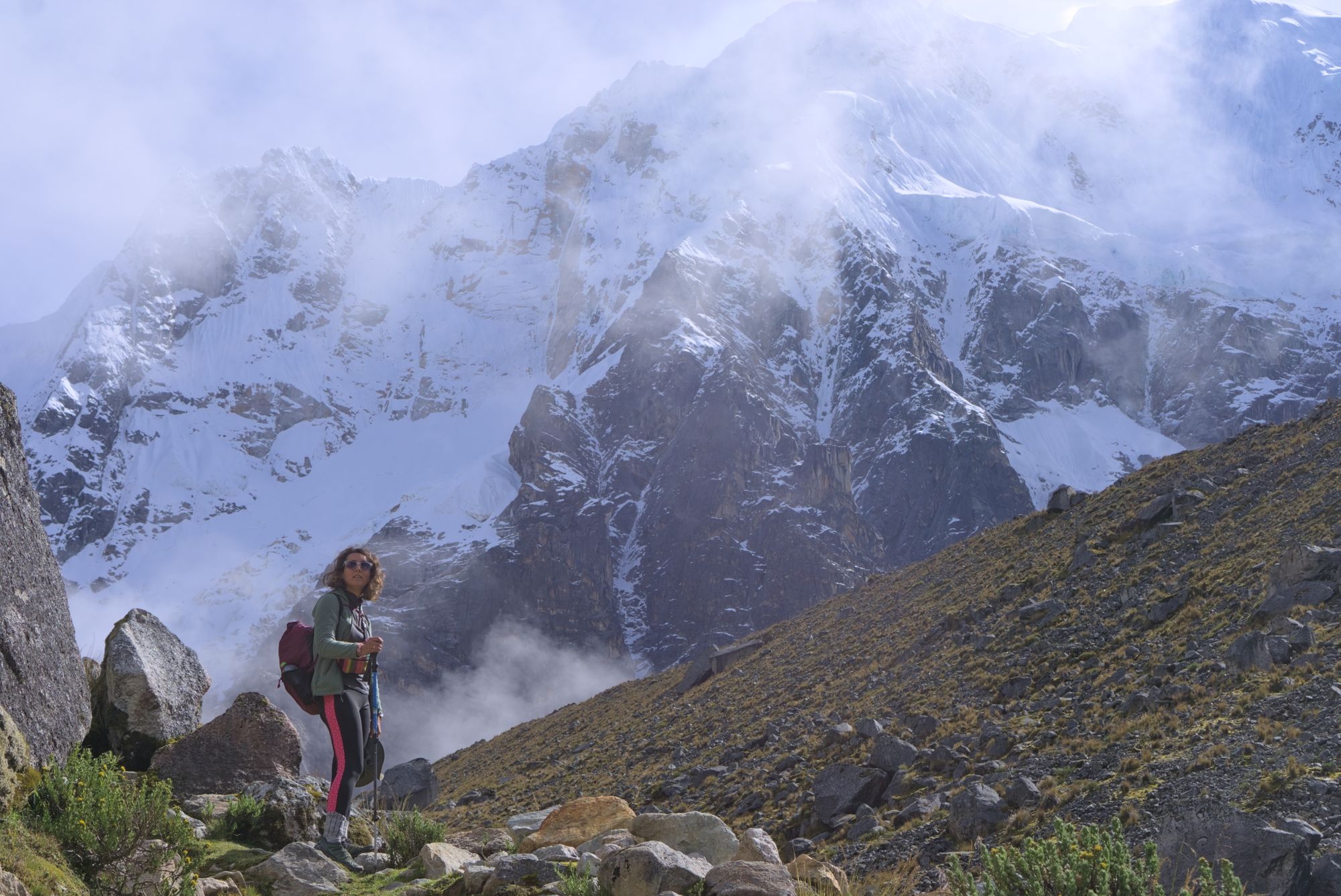
After a intense and demanding four hour climb we reach the Abra Salkantay pass, 4630m. It is a spectacular site to behold, the towering mountains in the background provide a picture perfect backdrop. We spend half an hour here immersed in the beauty of our surroundings and replenishing our body with much needed rest and plantain crisps. After this short break we begin our descent towards Chaullay.
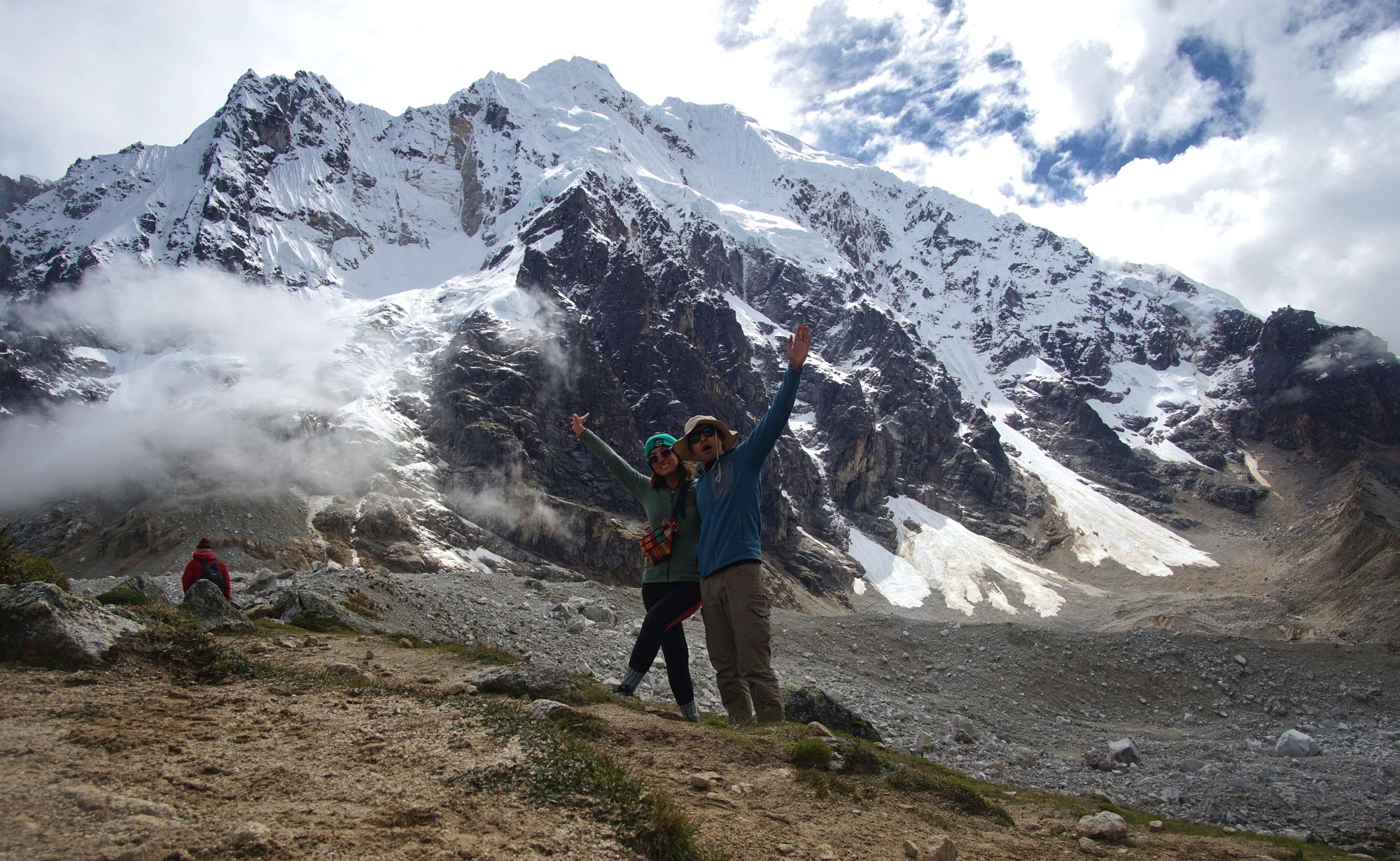
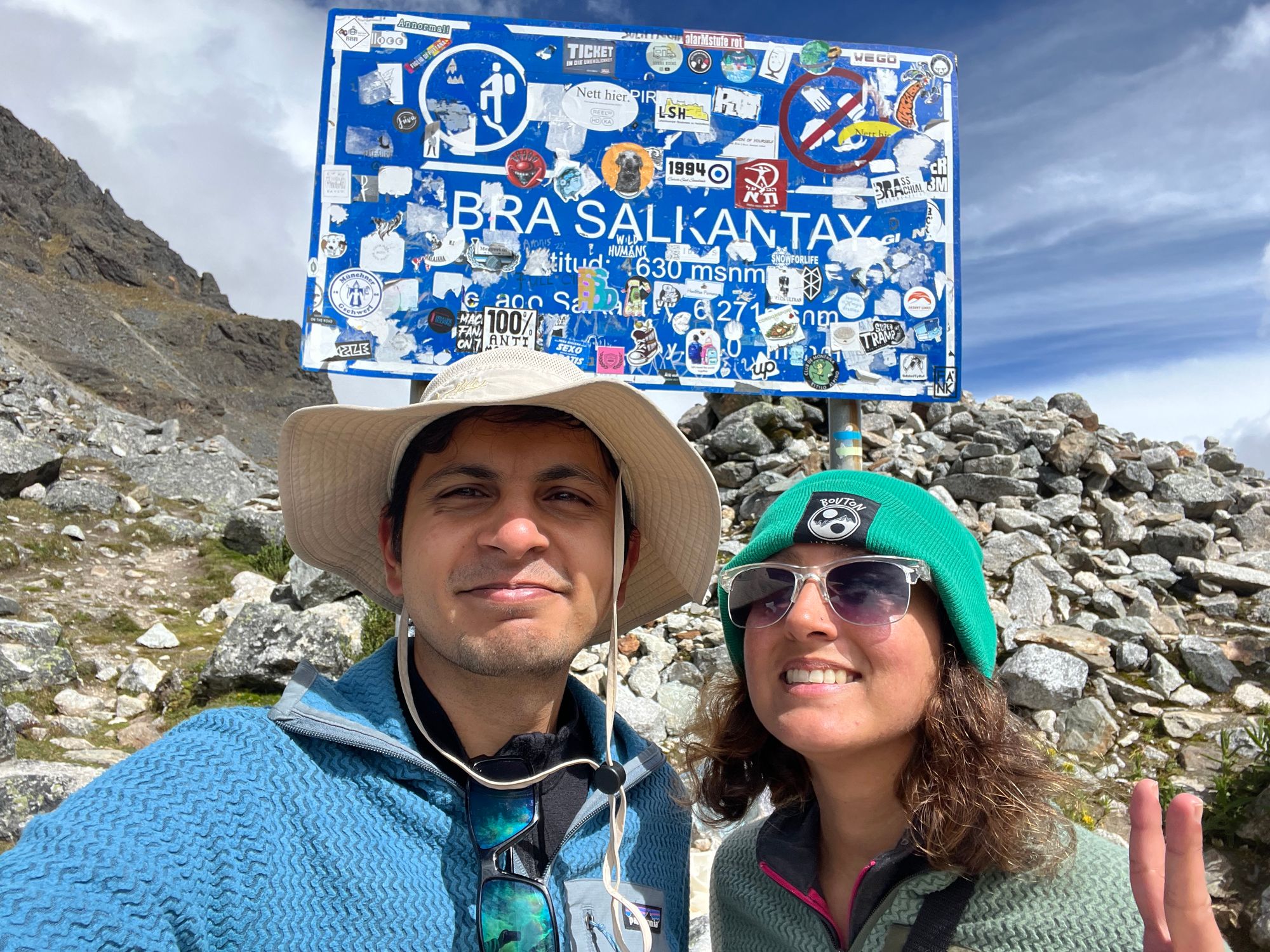
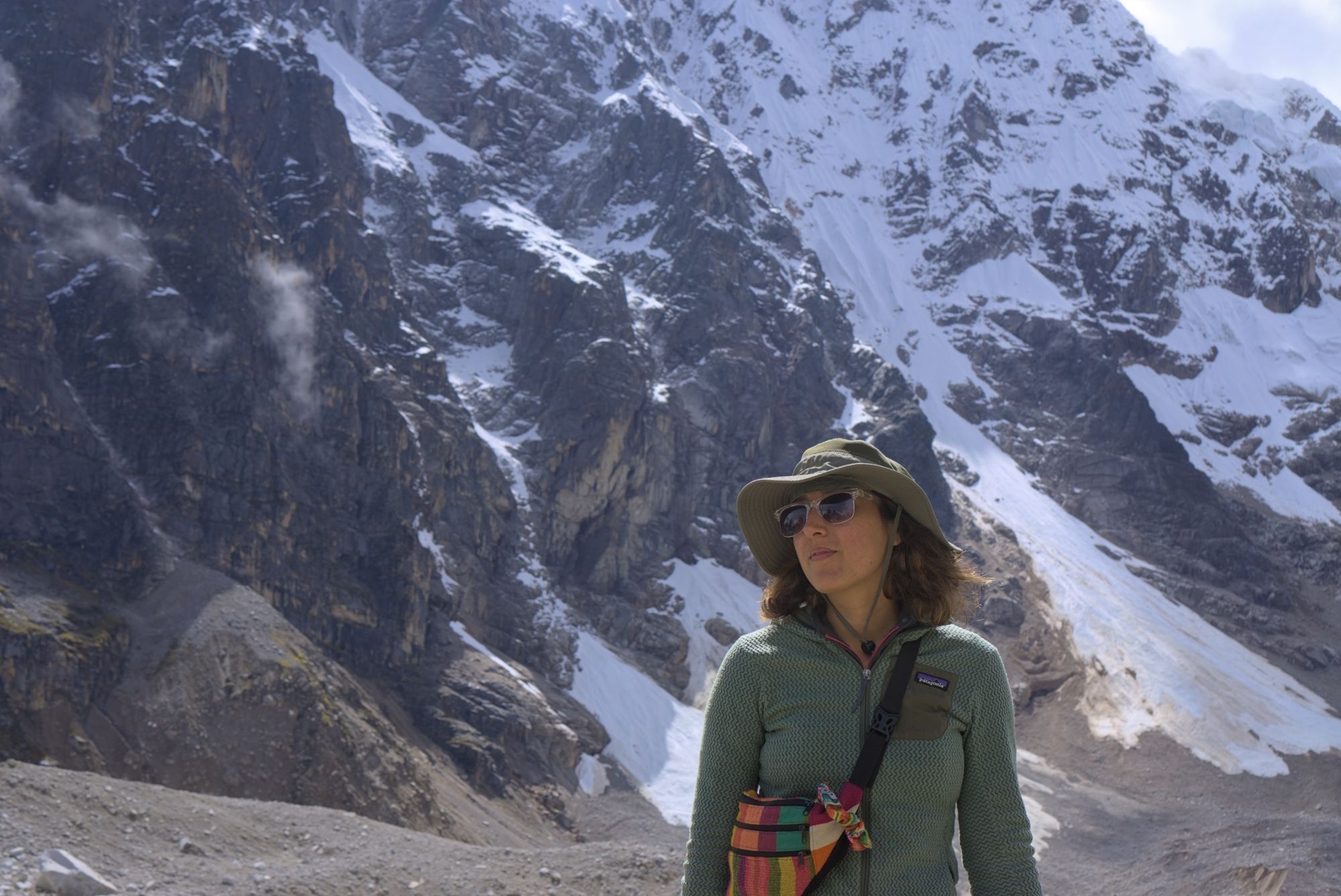
The descent is long and exhausting but luckily the weather is amazing and the views make up for all the walking. Thankfully we have our walking poles which our knees thank us for. Once we exit the valley we enter a forested area and the weather begins to get warmer. We arrive at the village of Puente Challuay around 16:00pm and find accommodation at a bed breakfast. It takes us five hours to reach our destination. After dinner and a welcomed cold shower, we call it a night.
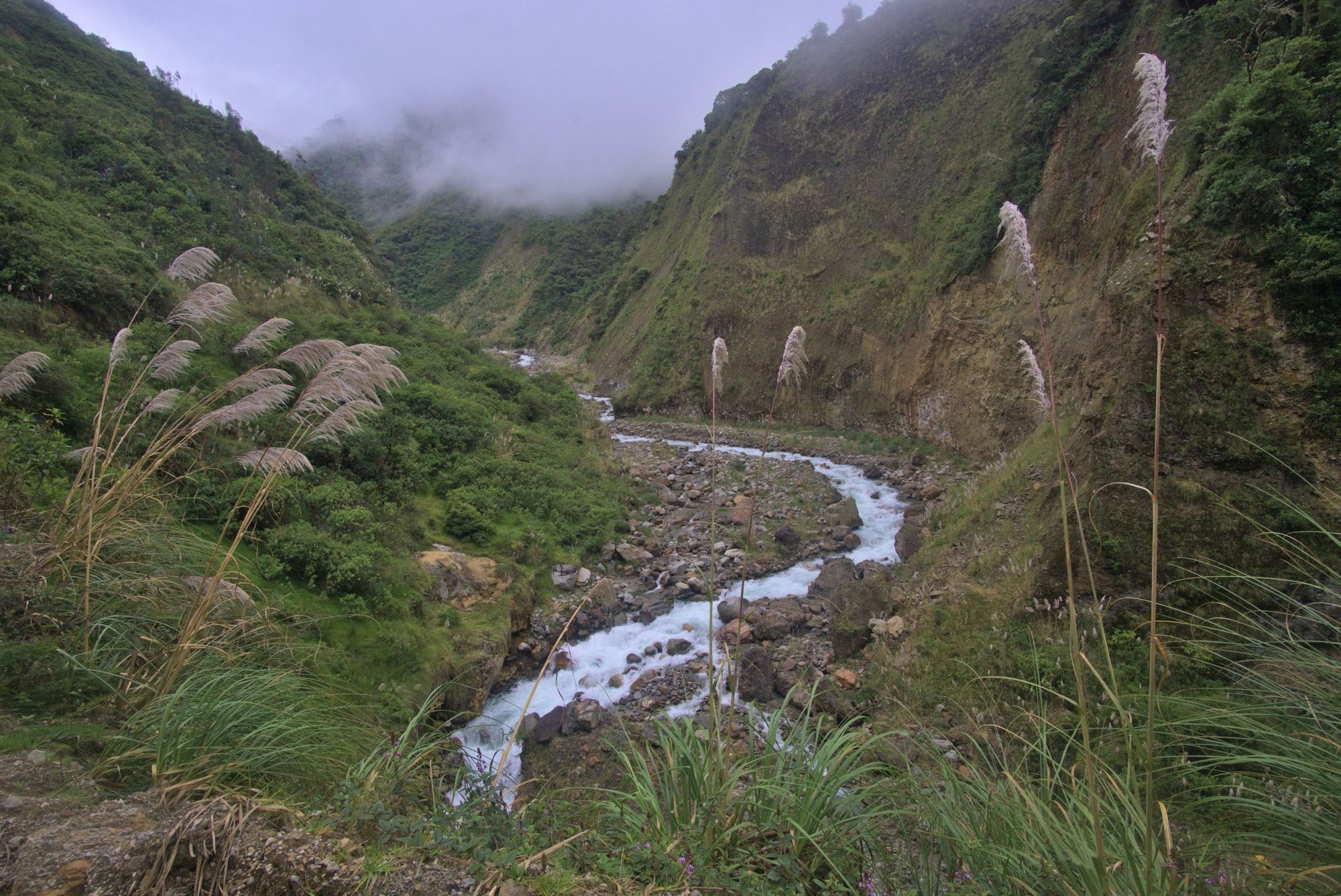
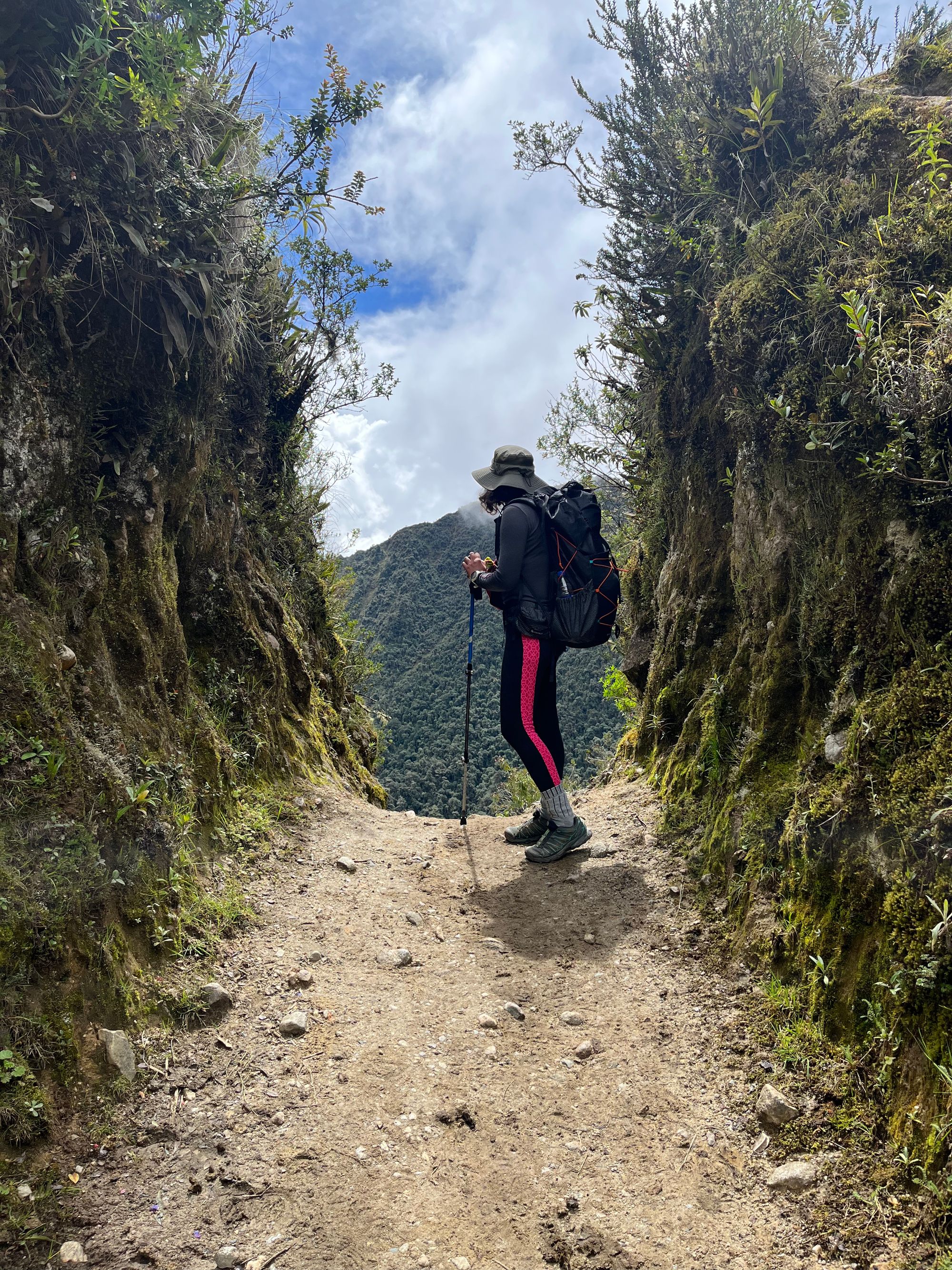
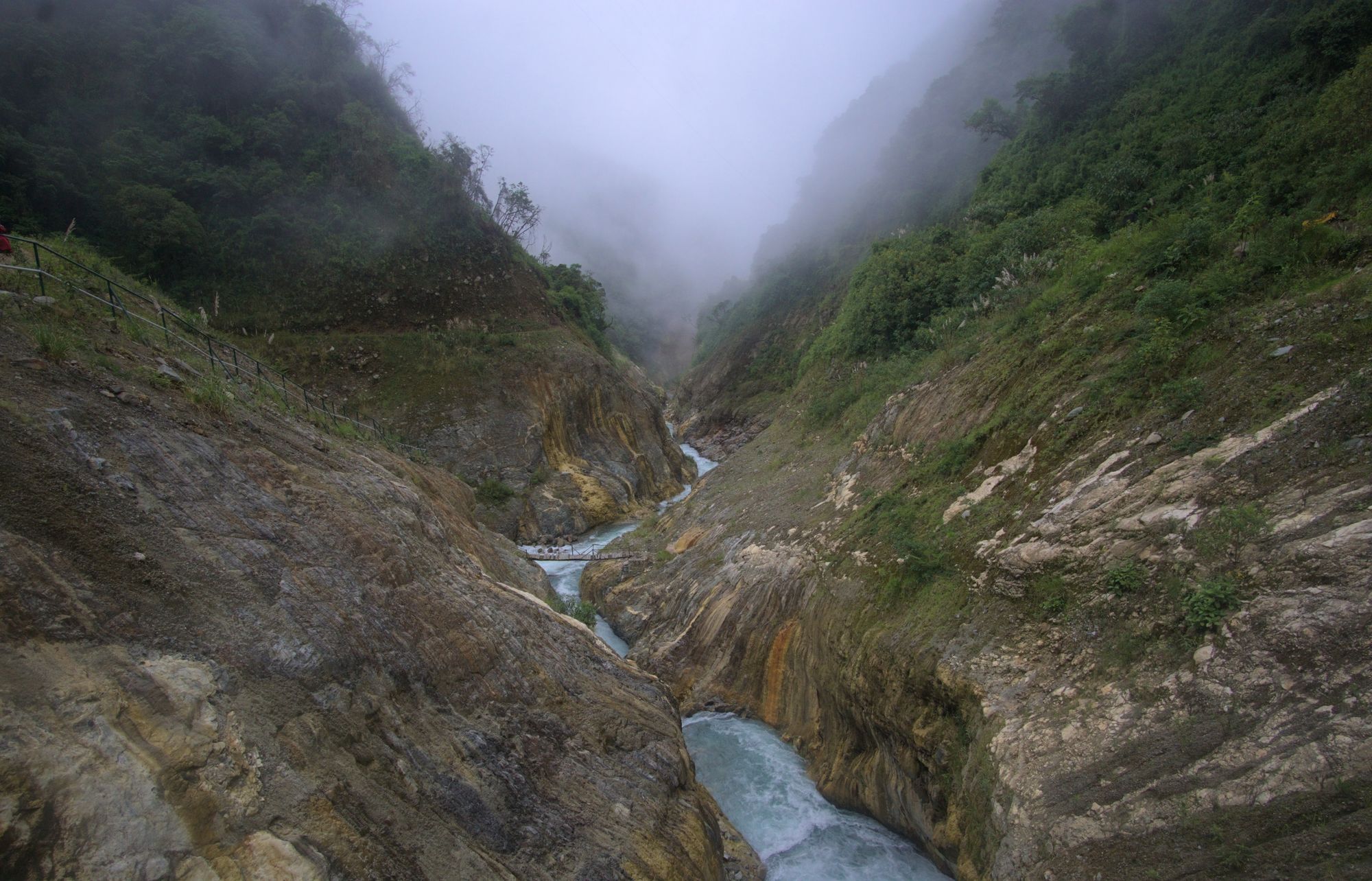
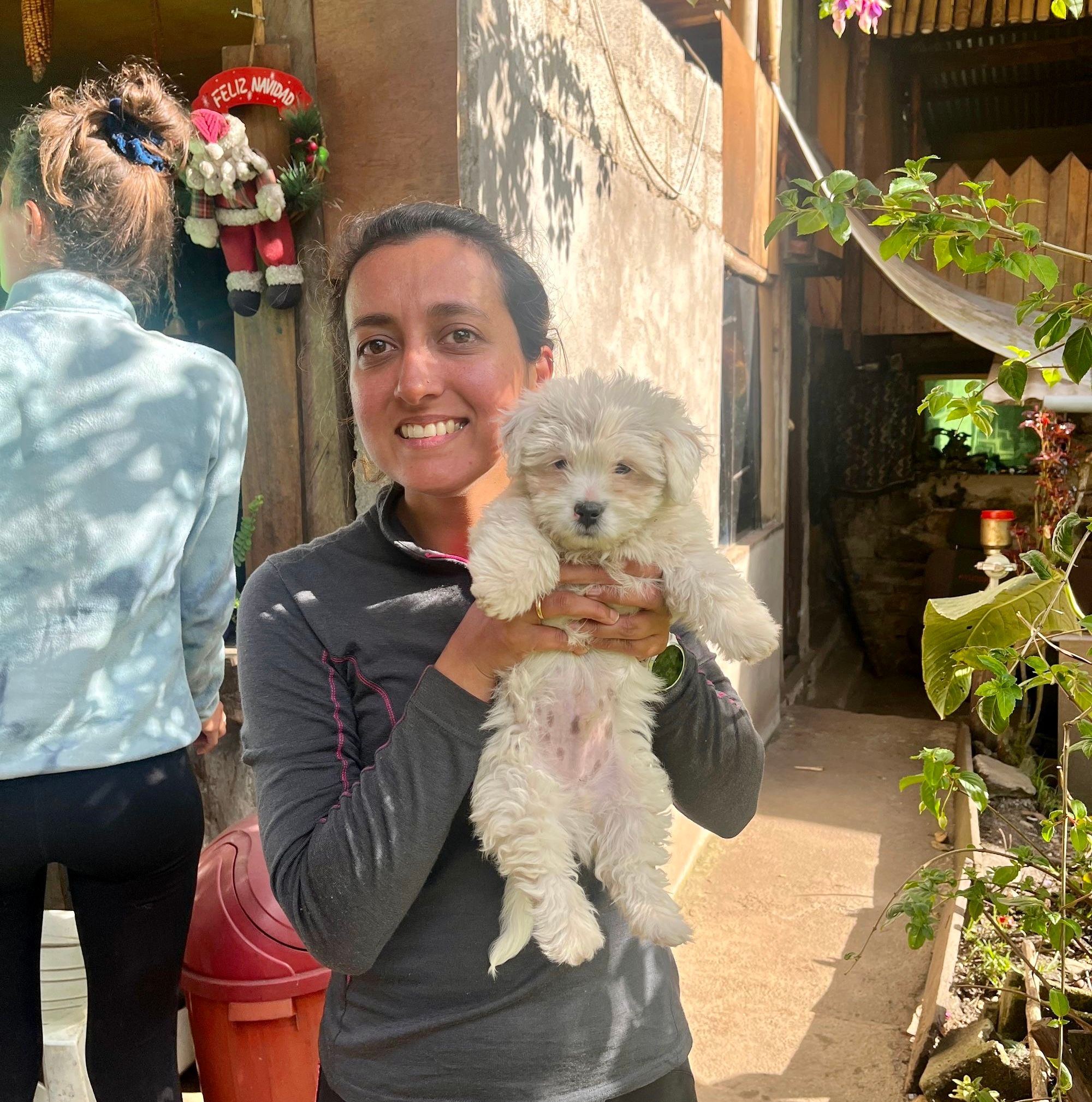
Day 3 - Chaullay to Lucmabamba
Path towards Lucmabamba Hike Info:
Distance: 18.91km
Duration: 5 hours, 20 mins
Descent: 970m
Difficulty: Moderate, minimal ascent
Huascar Capac, in Cusco, and Athahualpa Capac, in Quito, are two of Huayna Capac's sons who are now fighting over the crown. After several years of war, in 1532 AD Athahualpa's fury proves no match for his half brother and he is crowned the 13th Sapa Inca. Unbeknownst to him the European ships which have landed in South America with far superior technology and weaponry, are already on their way to Cusco, led by Spanish conquistador, Frank Pizzaro. The Inca army which has already been weakened by civil war and disease are easy for the Spaniards to defeat, and in 1532 AD, the same year that Athahualpa is crowned emperor, he is captured by Pizzaro and held for ransom. . .
According to our route map, today looks like it will be an easy day. After breakfast we prepare our lunch sandwiches and leave the accommodation. As soon as we exit town we are faced with a dilemma. The trail splits and we can see two paths, one going through the road and the other 'traditional' route through the jungle. Much to our dismay, we are forced to take the path through the road because a local standing near the jungle entrance advises us not to go from there due to a landslide. We still have our reservations because we see a few folk with a guide entering the area. Nevertheless, we decide to follow the advice and keep walking straight. (Later we overhear a couple of fellow hikers who had taken the jungle route on how they had to traverse their steps back as the landslide made it near impossible to cross the mountain).
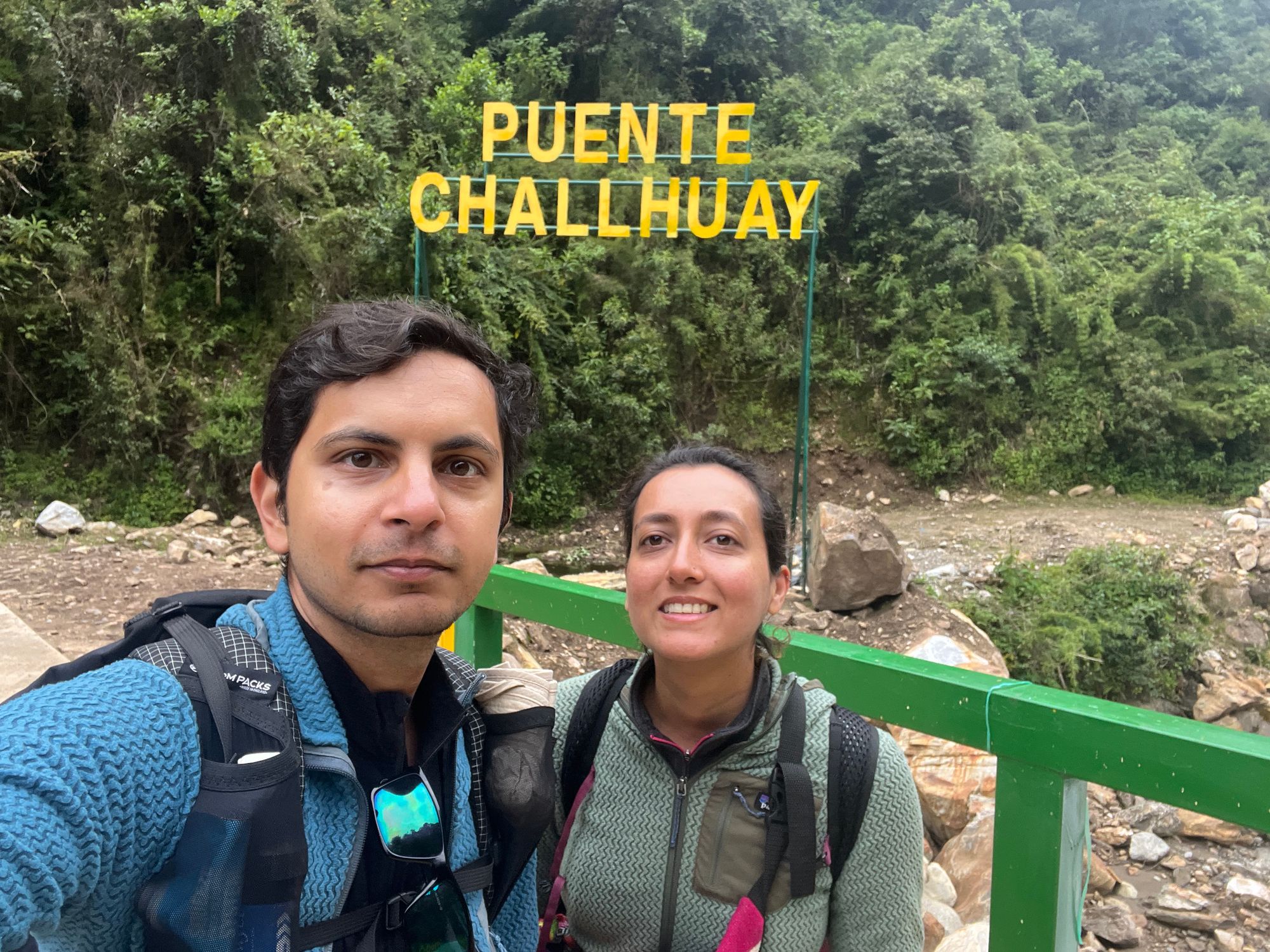
Shortly afterwards, it starts to rain and immediately brings back memories of the hike we did in Patagonia when my phone broke down. I realise I do not have a phone, so I toss my worries aside. We could have sat out the rain in a small cafe at one corner of the road, where we see several others take shelter, but we are feeling energised and decide to keep on our feet to finish the day early. The path has minimal ascent, so we keep walking. The rain eventually stops and the sun comes out, we welcome it with open arms. Everything seems to be going fine until we get to a point where we have to cross a small water stream flowing on the side of the mountain, there aren’t any rocks to cross over the stream and no way around as the path is quite narrow, so we just walk through the water in our shoes, only realising later that crossing it barefoot would’ve probably been a better idea. We cross a few more streams and have wet feet for the most part, but the sun is out and our shoes dry quickly. When we come to almost the end of the road, we see another stream, by this time our shoes are completely dry so we decide to cross the flowing water stream barefoot. The cool water and smooth rocks under our feet feel very relaxing. It also gives us a chance to sit down and change into dry socks.
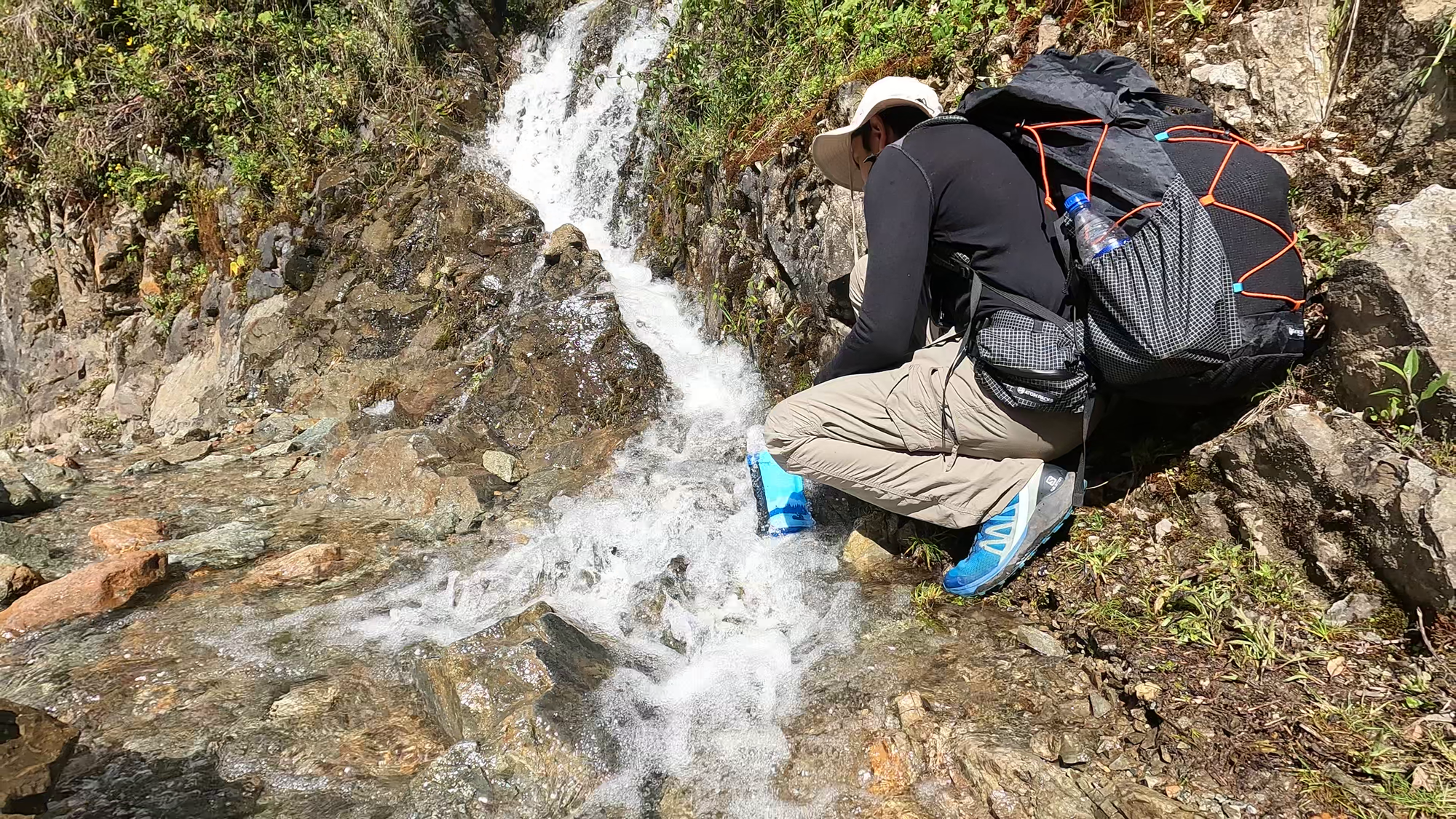
We arrive at Viamonte Eco Lodge around 12:40pm that day. This is one hotel we had read about prior to starting our trek. We were hoping to find accommodation here and we are in luck. Our room is beautiful and our hosts are charming. We arrive during lunch time so after eating our packed lunch of, (you guessed it), tuna and pesto on bread, we head for a coffee tour run by the family in their coffee farm, not far from the lodge.
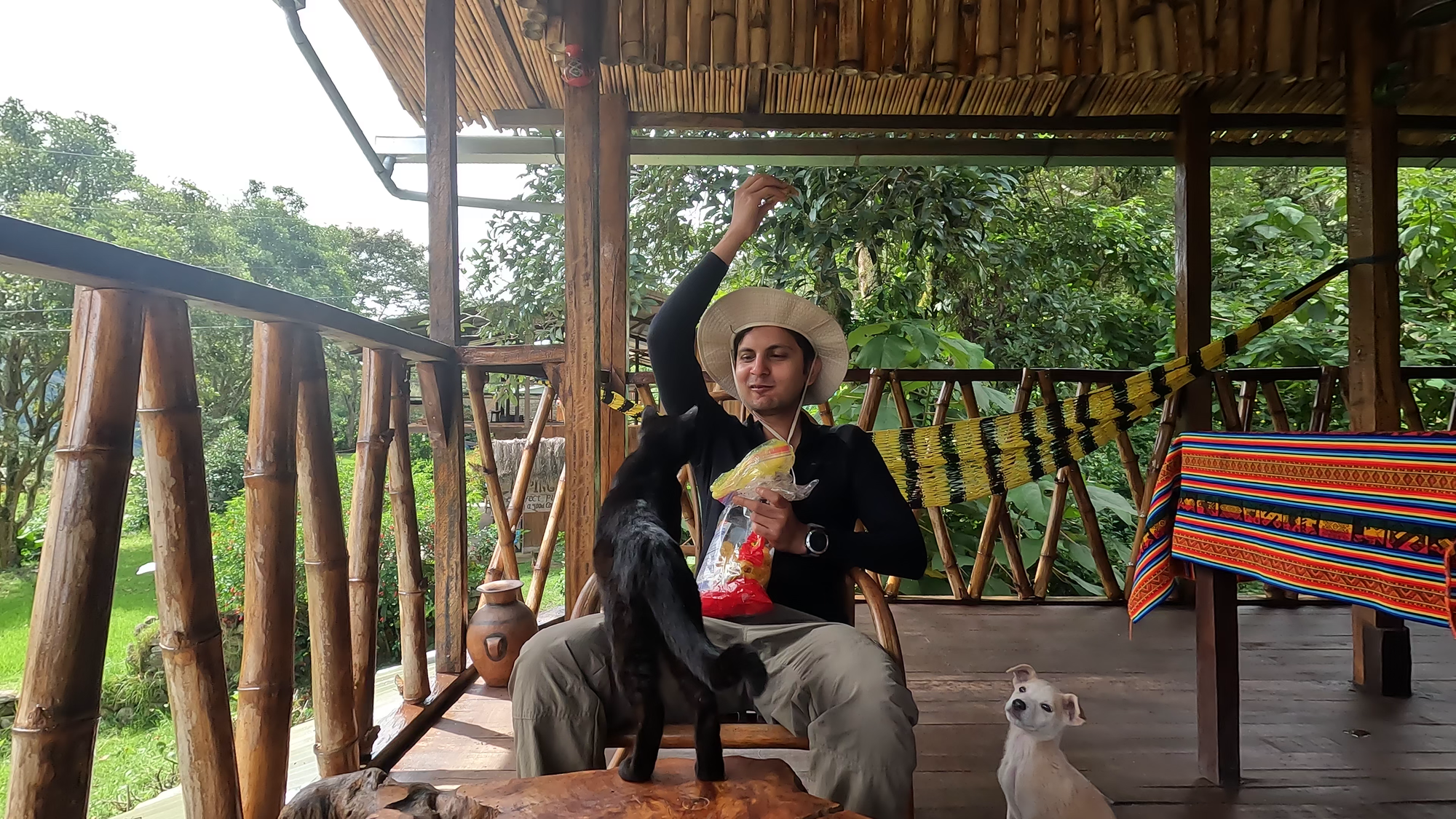
At the coffee tour, we have the sweetest encounter with a person who works at the farm, who is intrigued by England and the fact that we have travelled from so far. Although he only speaks Spanish and our Spanish is abysmal to say the least, somehow we manage to communicate with each other. We also end up buying a bag of coffee beans for friends back home.
During dinner time, we meet some locals from Lima, who are staying at the same lodge and were also on the bus with us to Soraypampa on the first day. We get lots of local recommendations for places to visit from them and exchange numbers in hopes of meeting again.
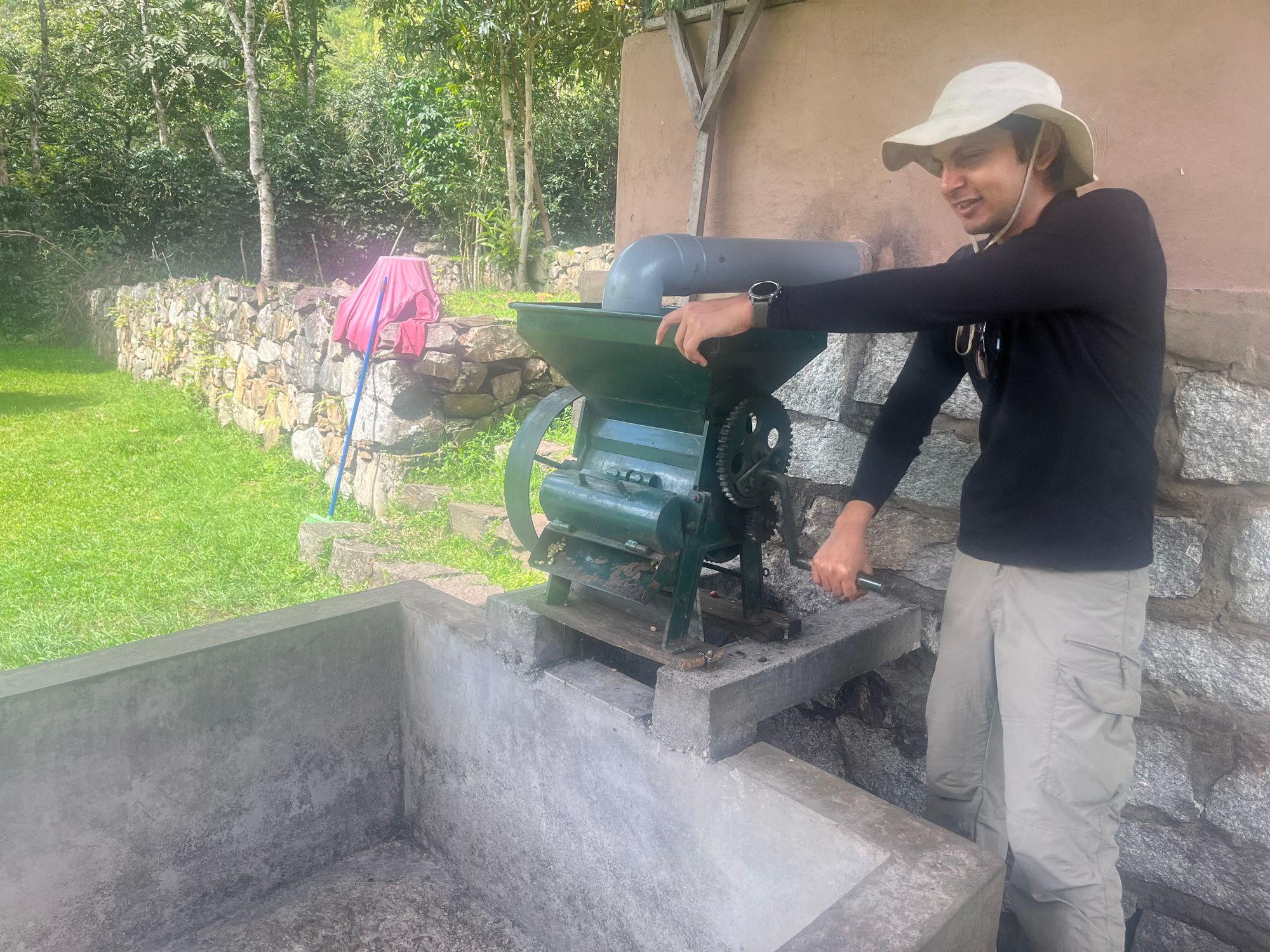
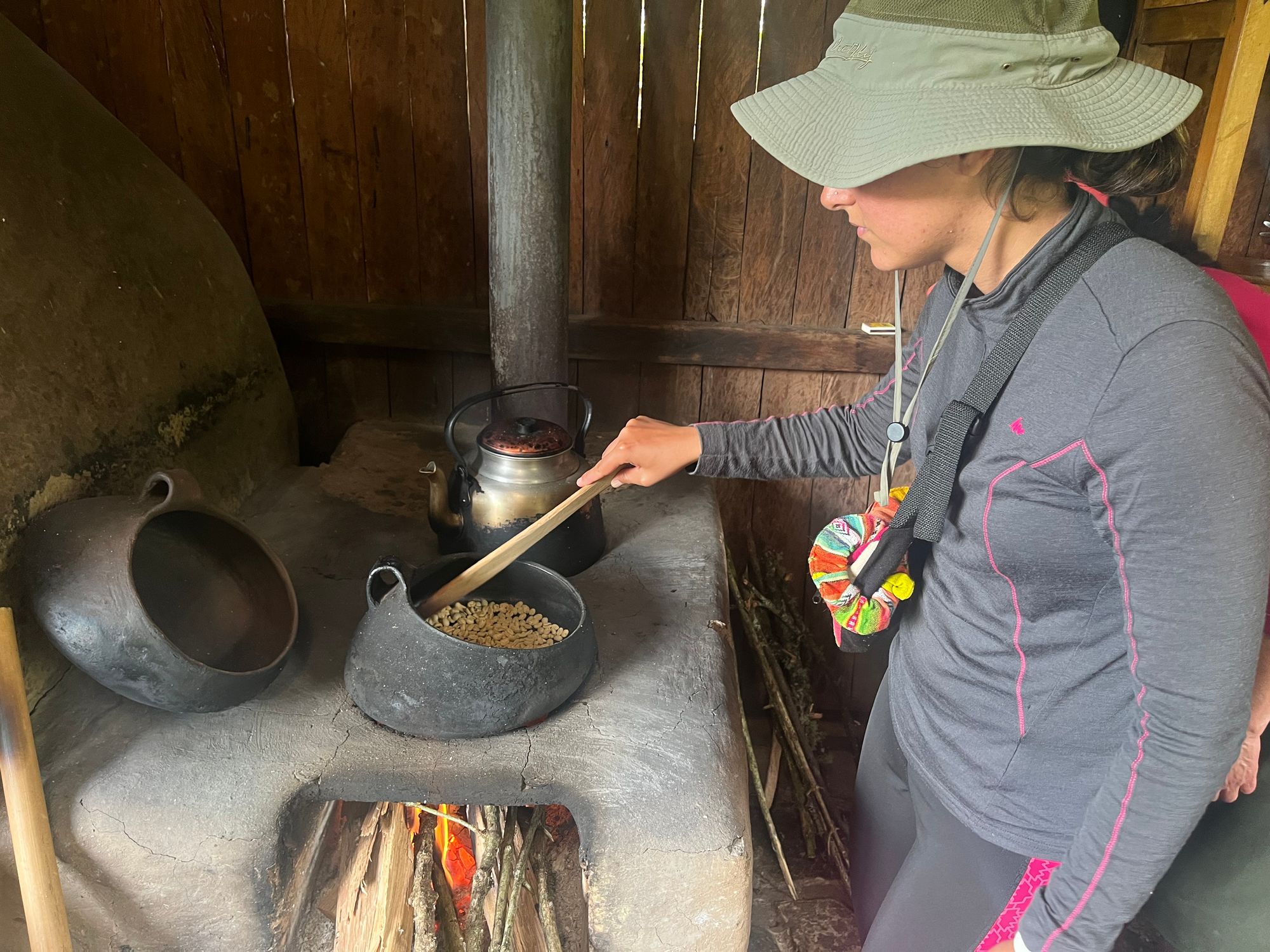
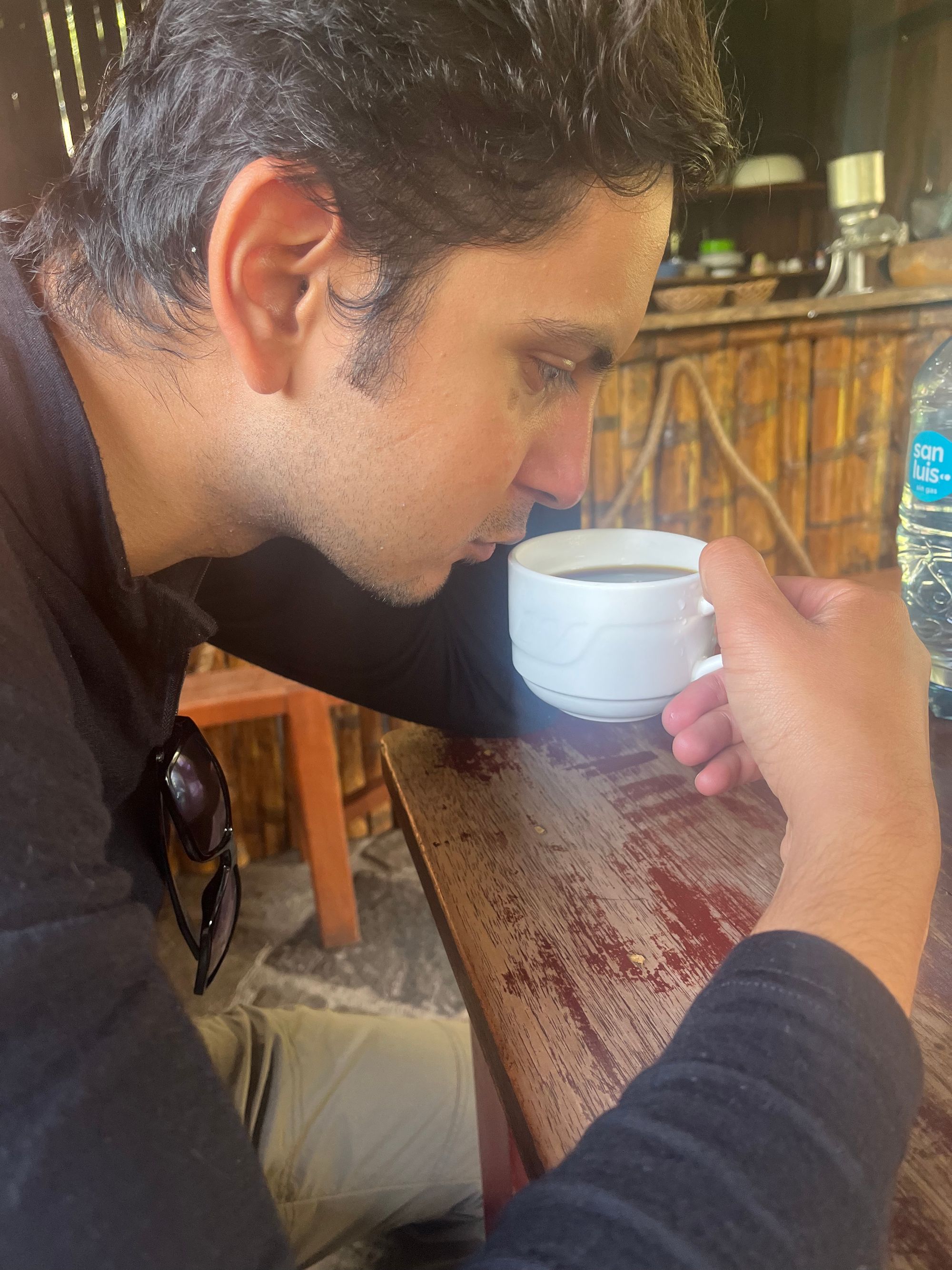
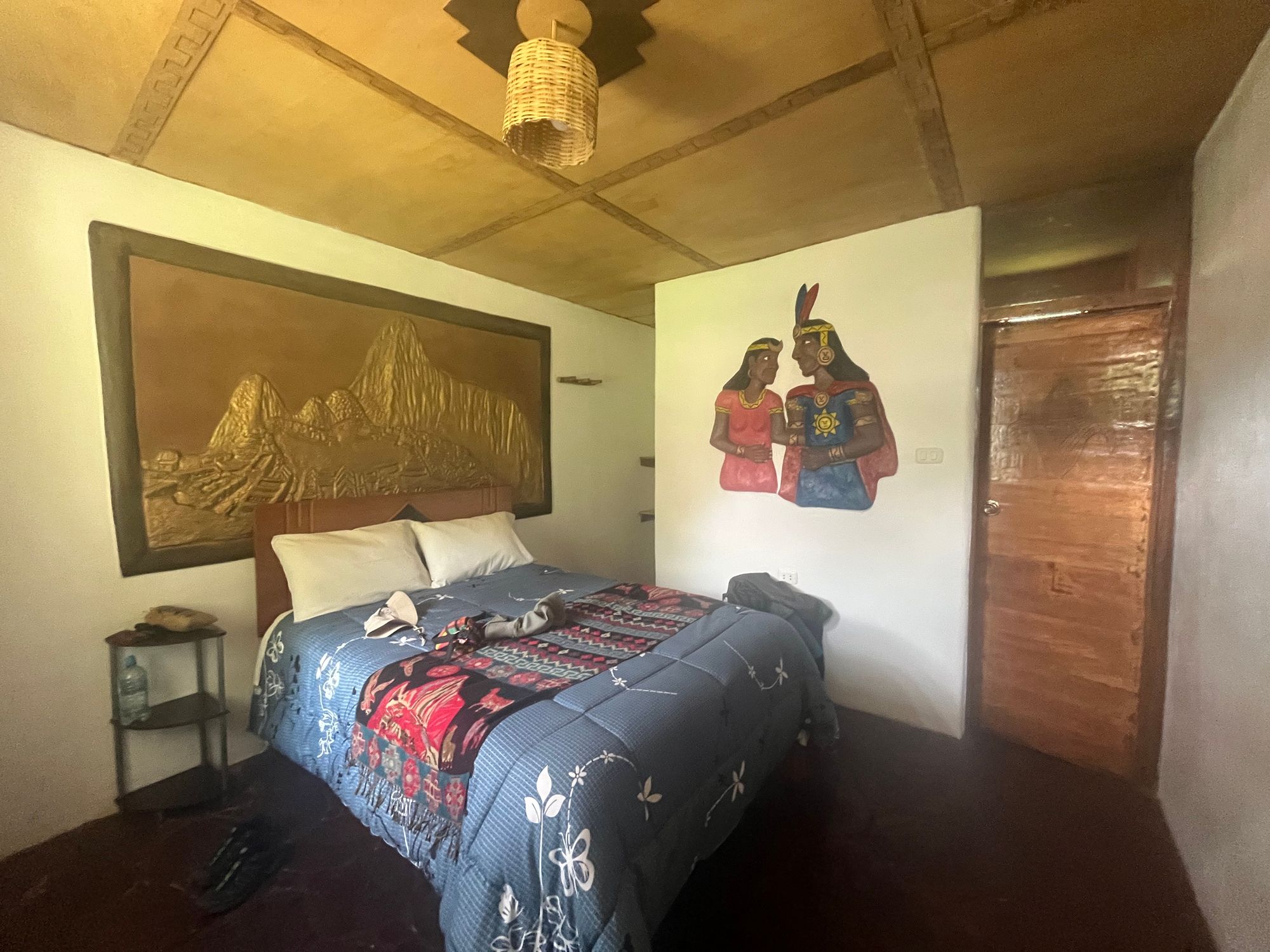
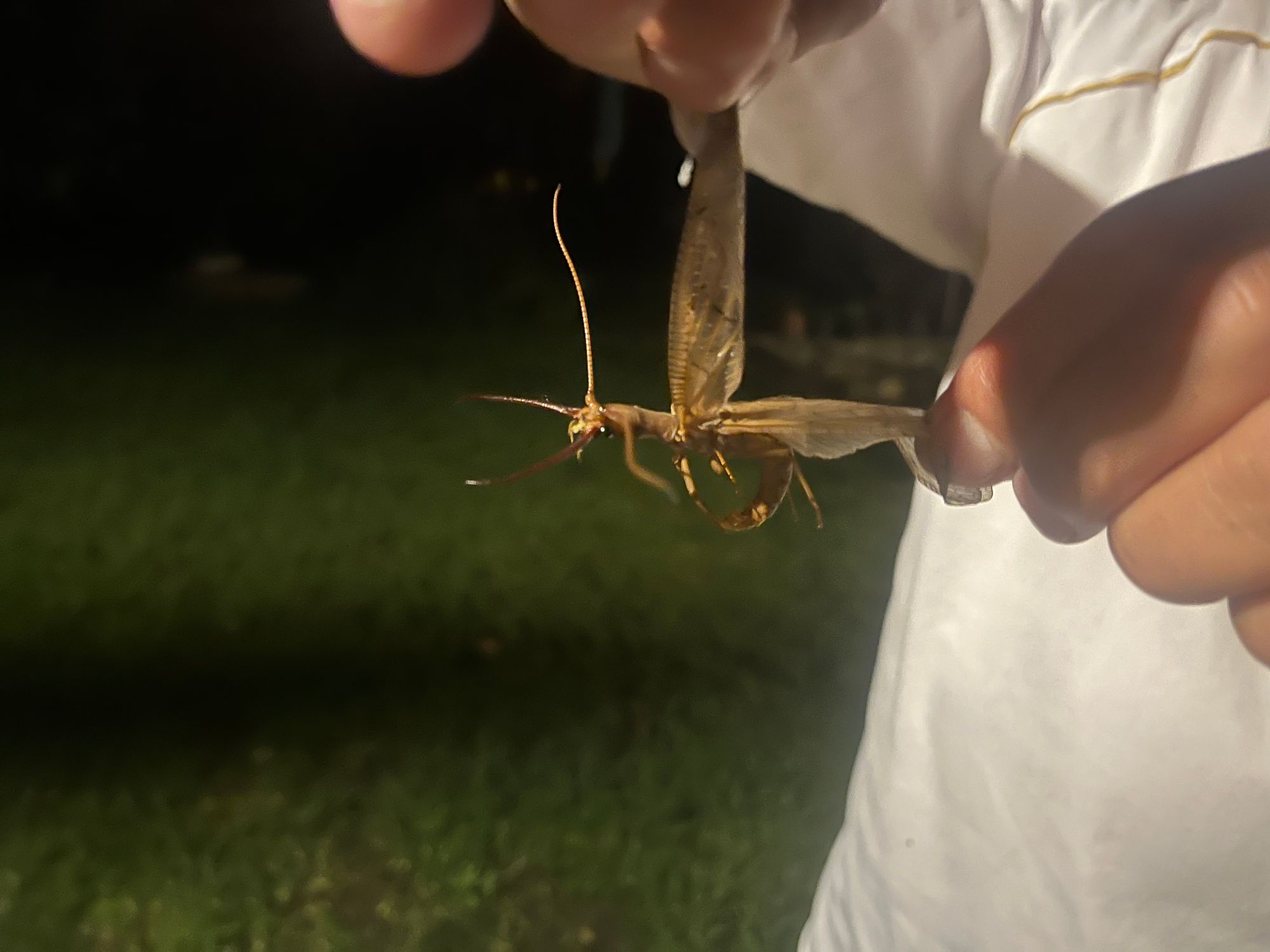
Day 4 - Lucmabamba – Llaqtapata – Hidroeléctrica
Llqatapata & Hidroelectrica Hike Info
Distance: 23.04 km
Duration: 9hrs 07 mins
Difficulty: Moderate, due to length, the warm weather can be a factor
Athahualpa is executed by the Spanish in 1533 AD. In the years that follow, a puppet king is instated as the ruler and Pizzaro founds the city of Lima, renaming it the capital. After this more and more Spaniards arrive in Peru. In 1537 AD a giant rebellion is led by Manco Inca, Athahualpa's younger brother, who retrieves to the mountains and founds a new capital, Vilcabamba. Pizzaro is killed in this battle. For the next 37 years the Incas fight the Spaniards, until in 1572 AD the last of the Inca emperors is executed signalling the end of the Inca empire. . .
After a delicious breakfast we leave bright and early for our last day of walking. It offers us our first glimpse of Machu Pichu, albeit very tiny.
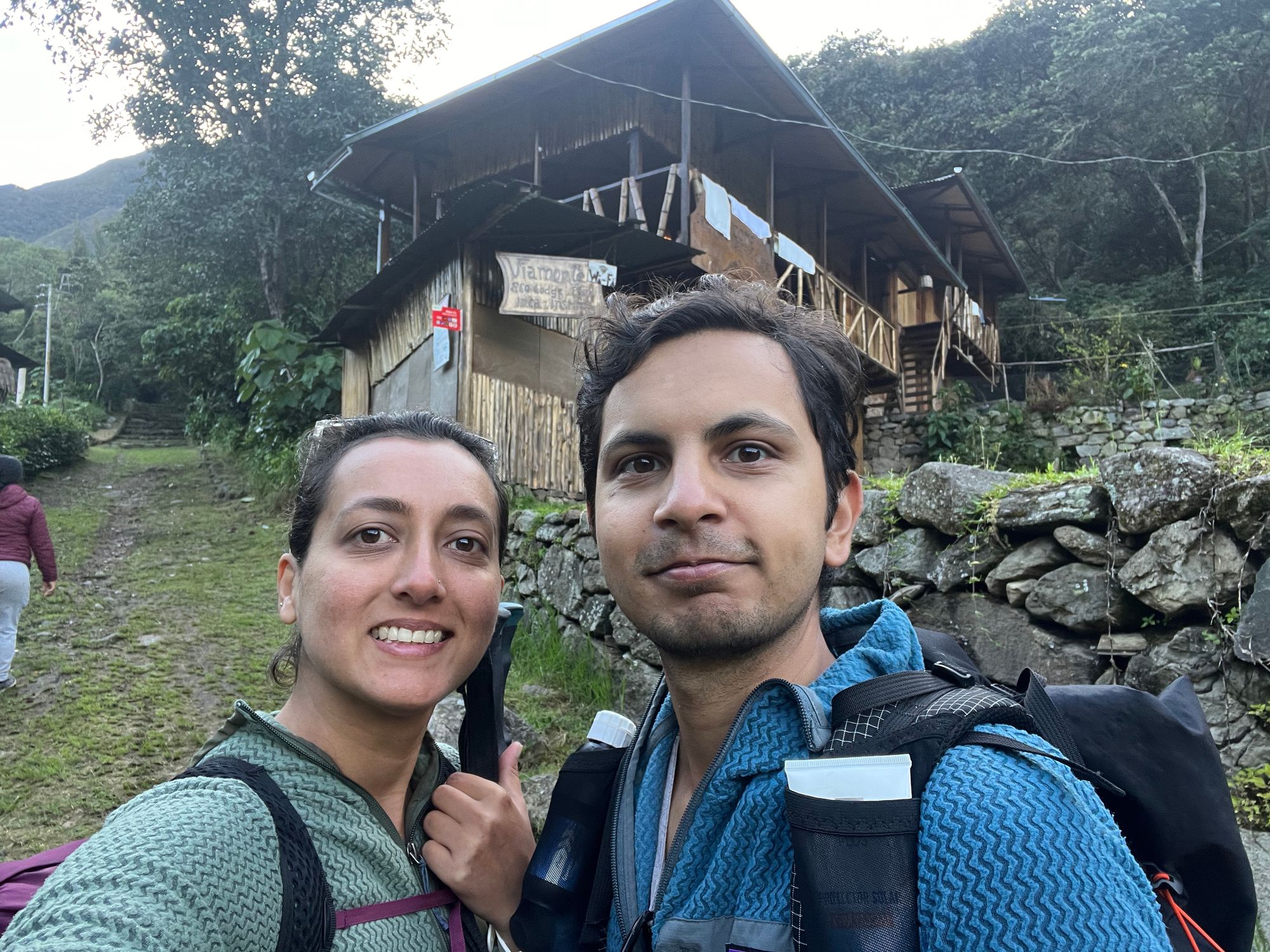
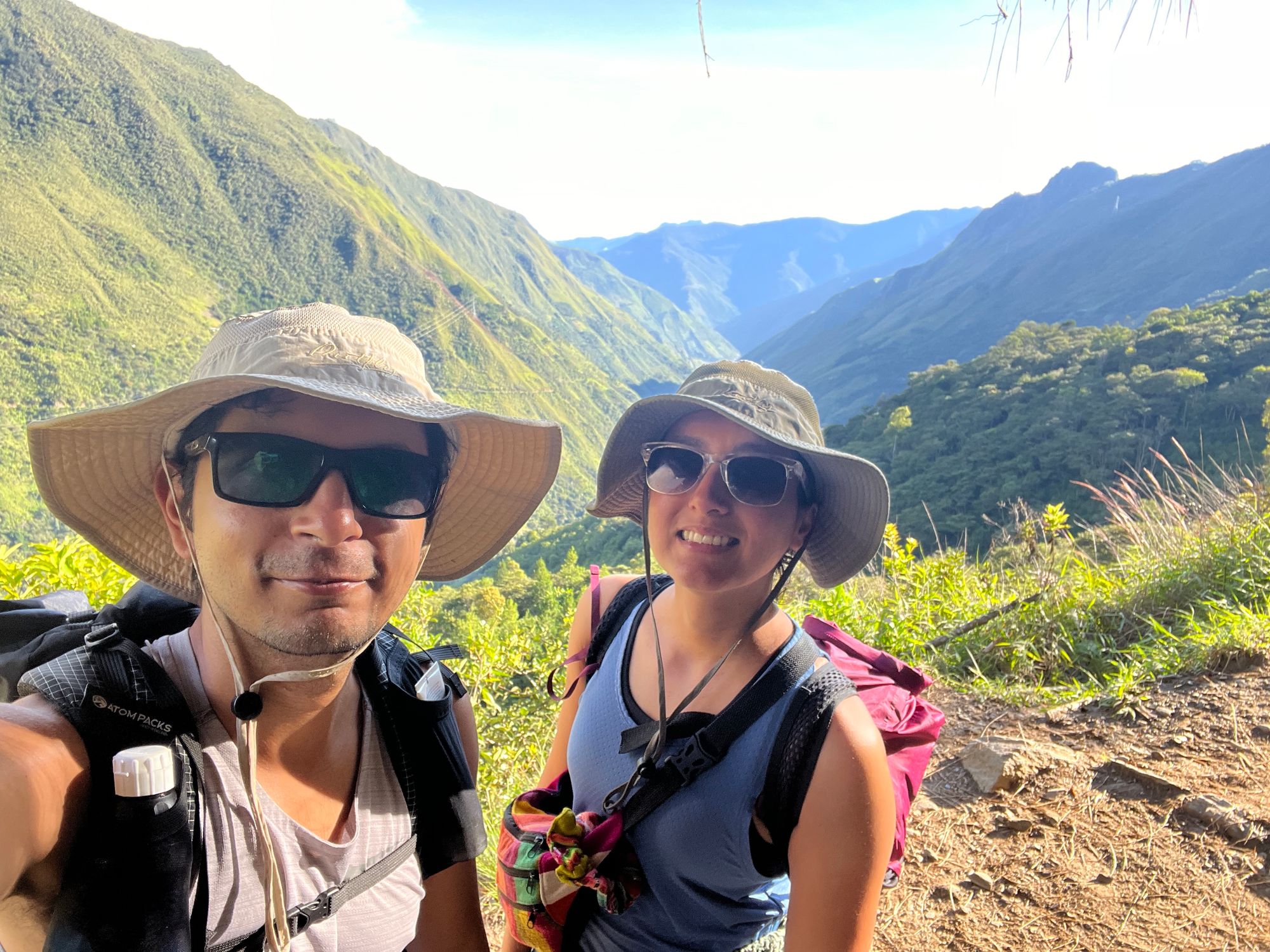
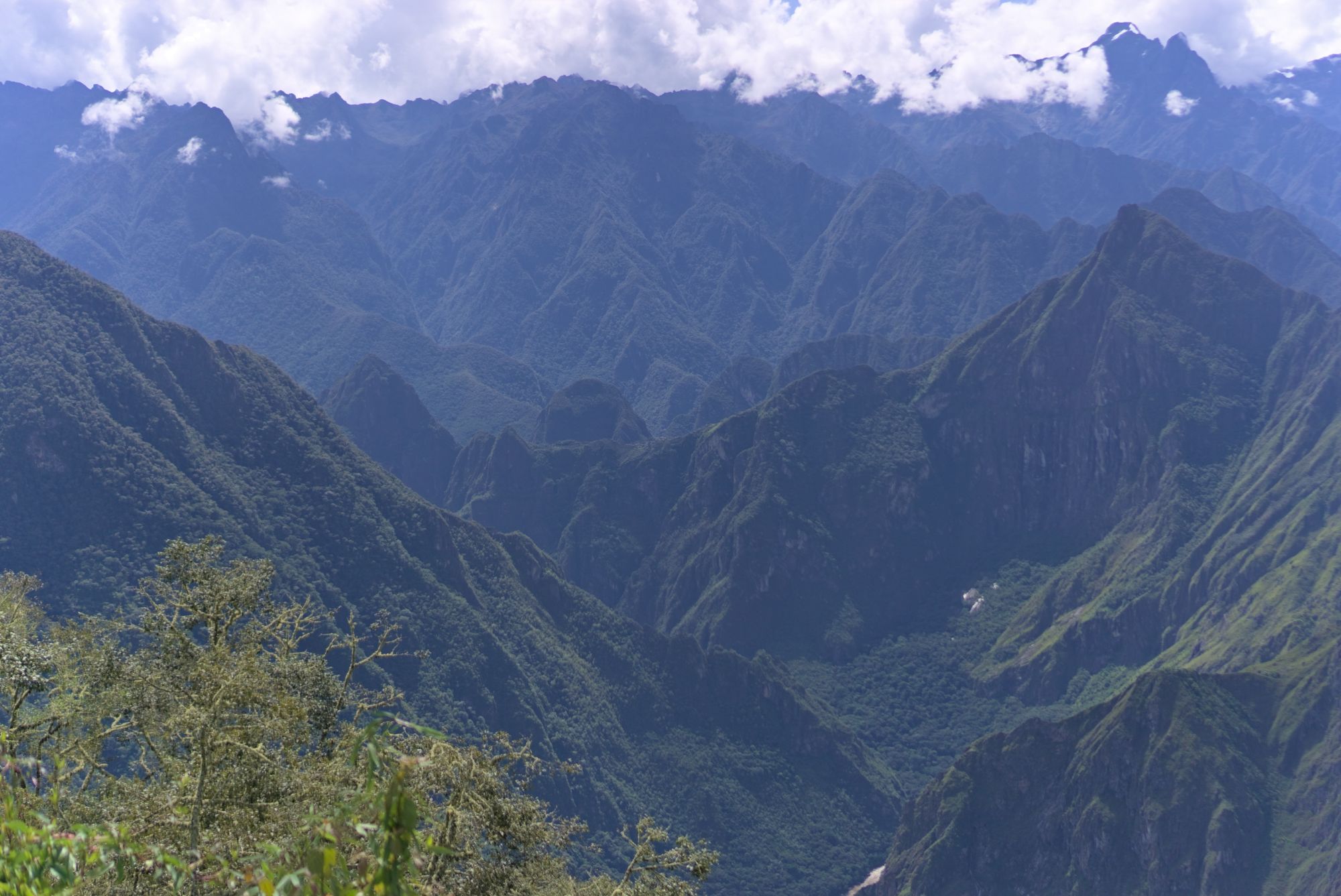
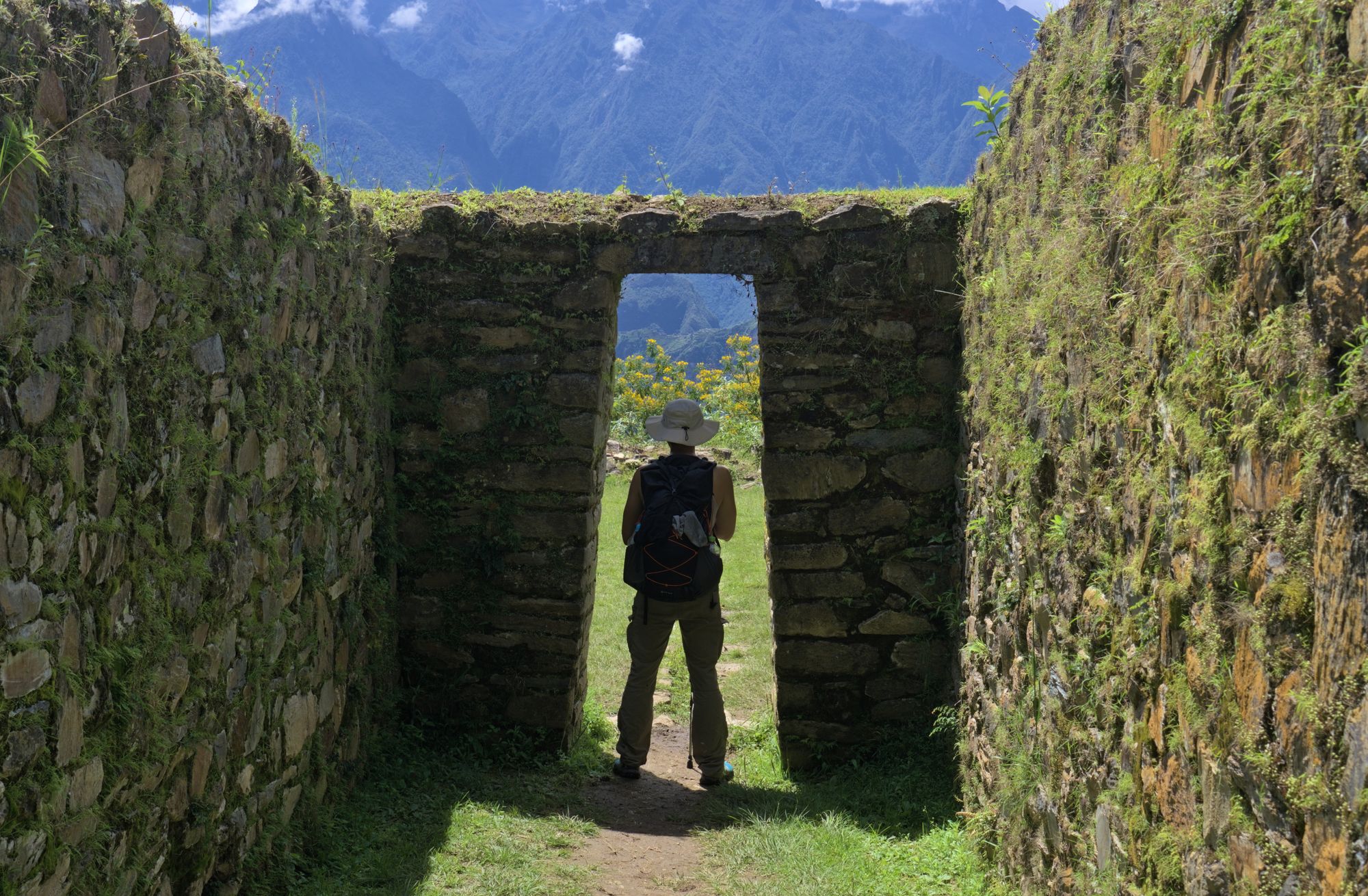
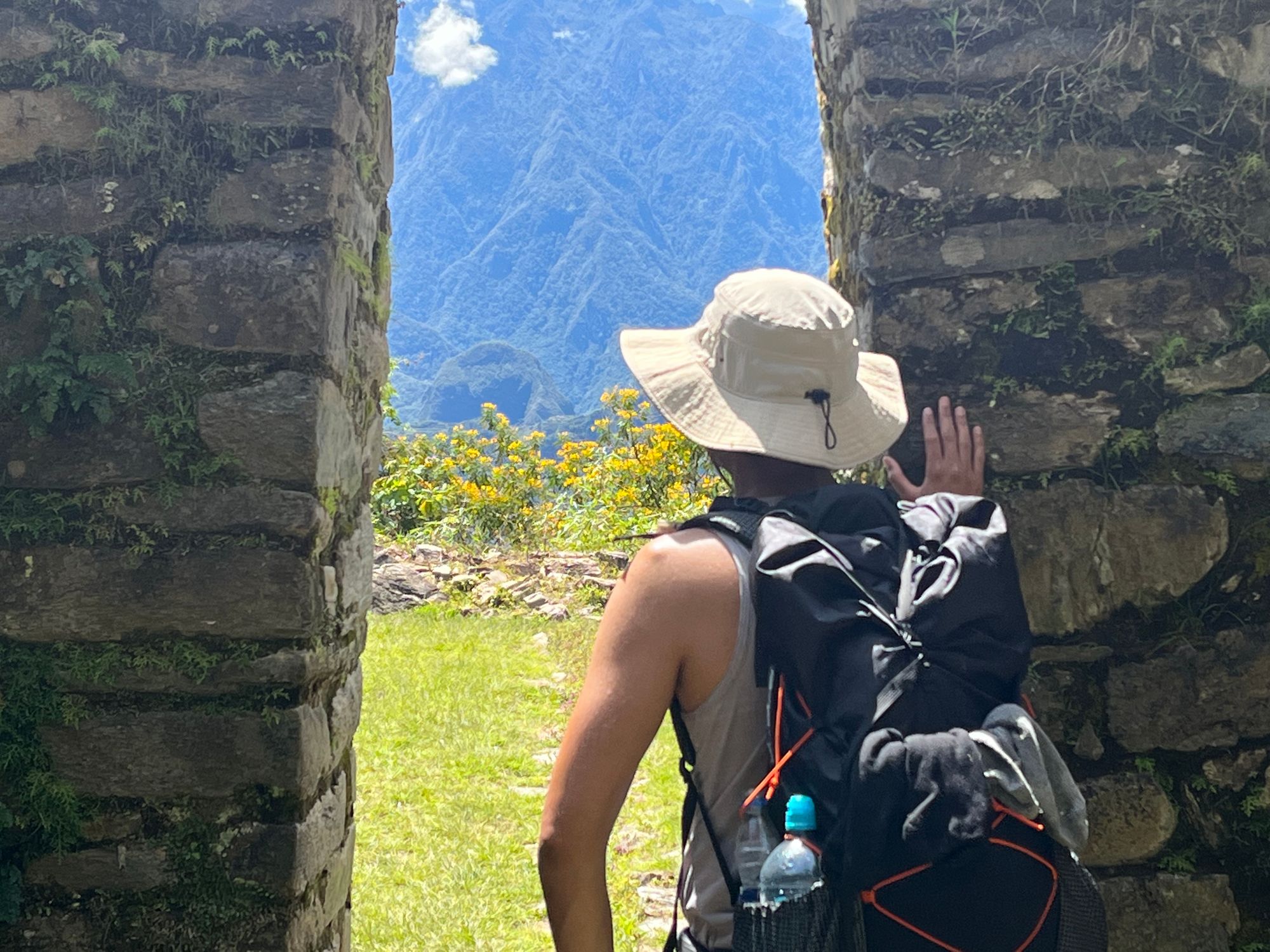
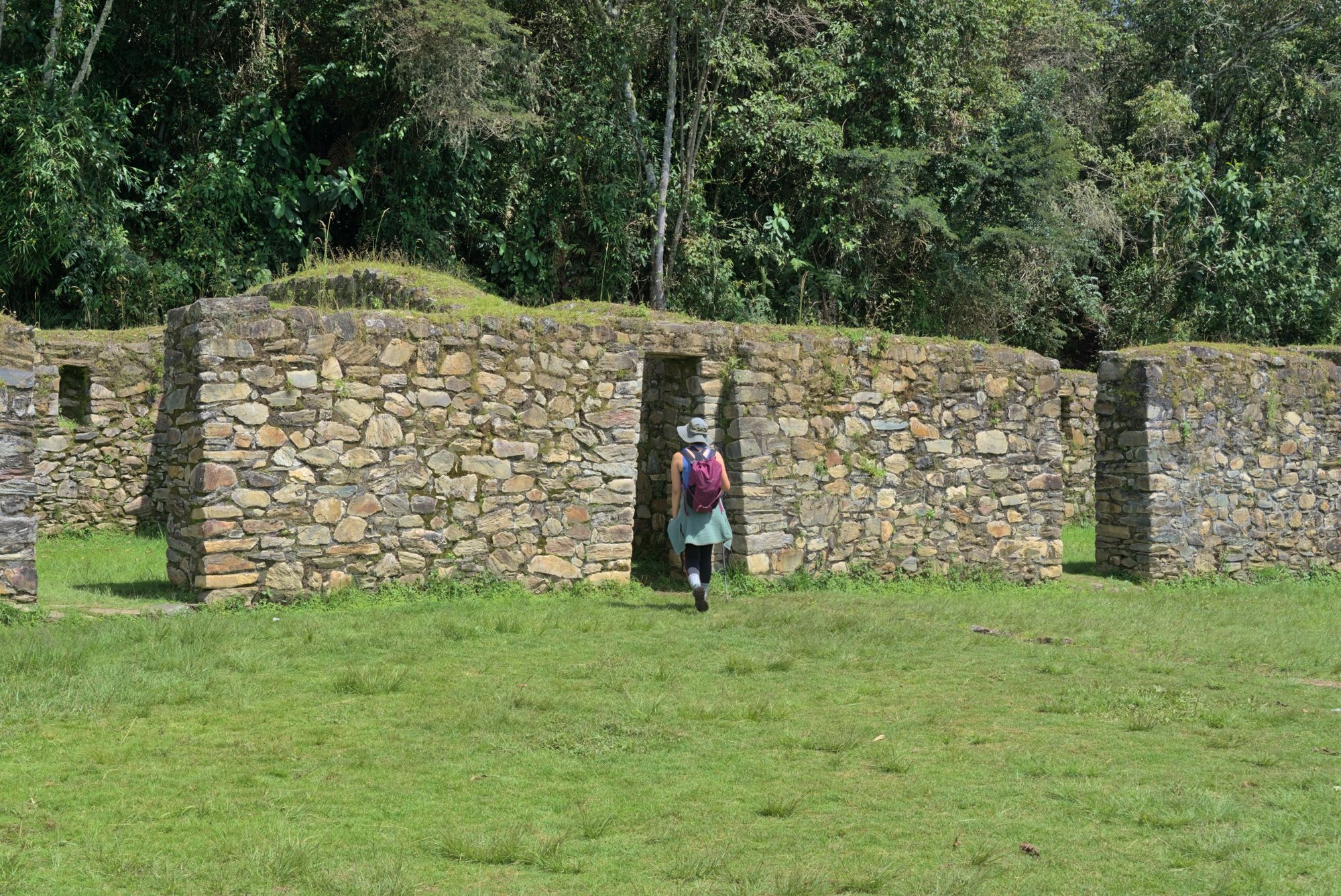
After the initial zigzaggy ascent towards the ruins of Llaqtapata is over, the remainder of the hike is mostly a descent going through a forested path. The path is steep and is not easy on the knees. It is long and tiring. The warm weather does not help either. We try and distract ourselves along the way with the flora and fauna that we encounter.
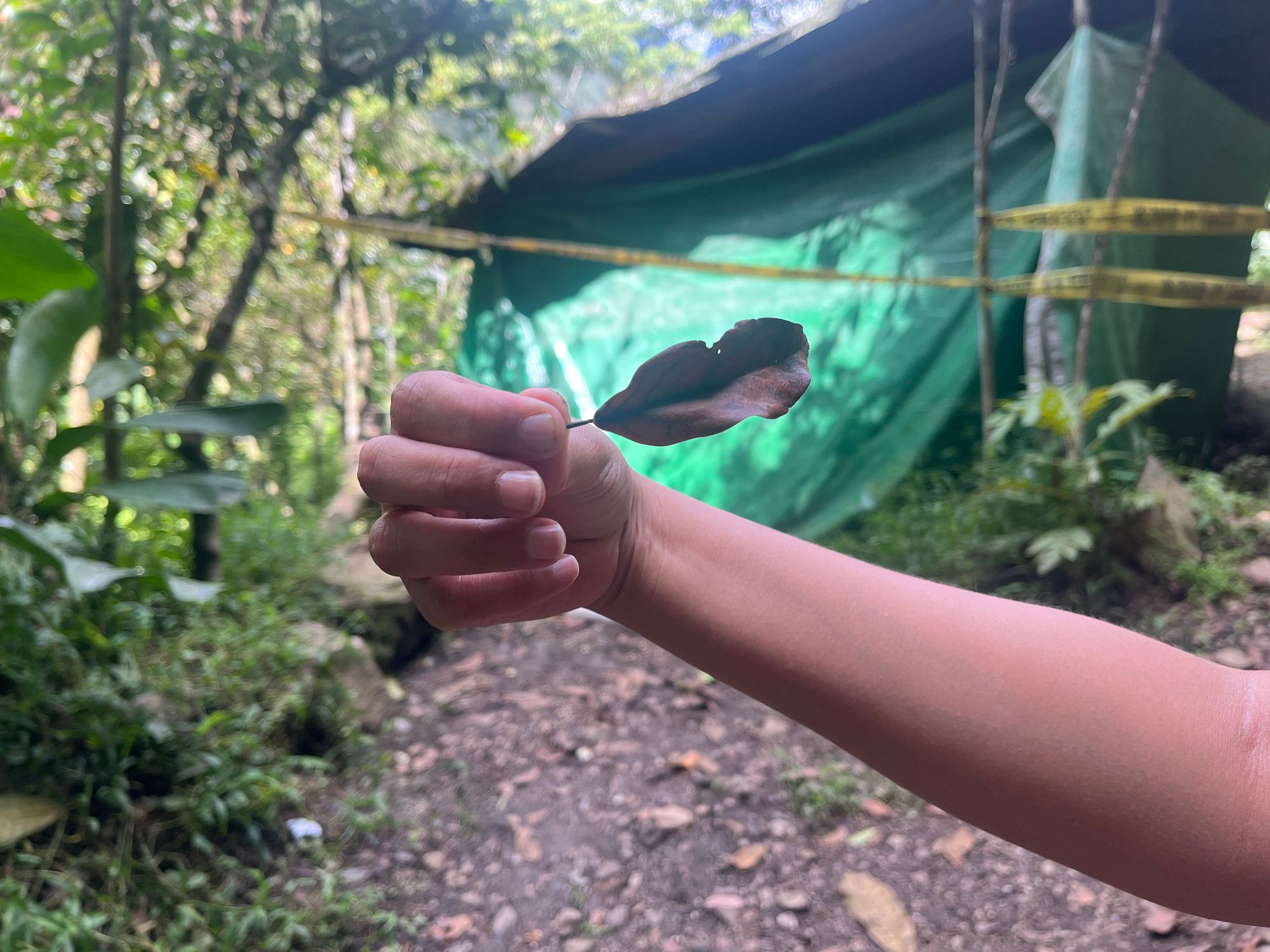
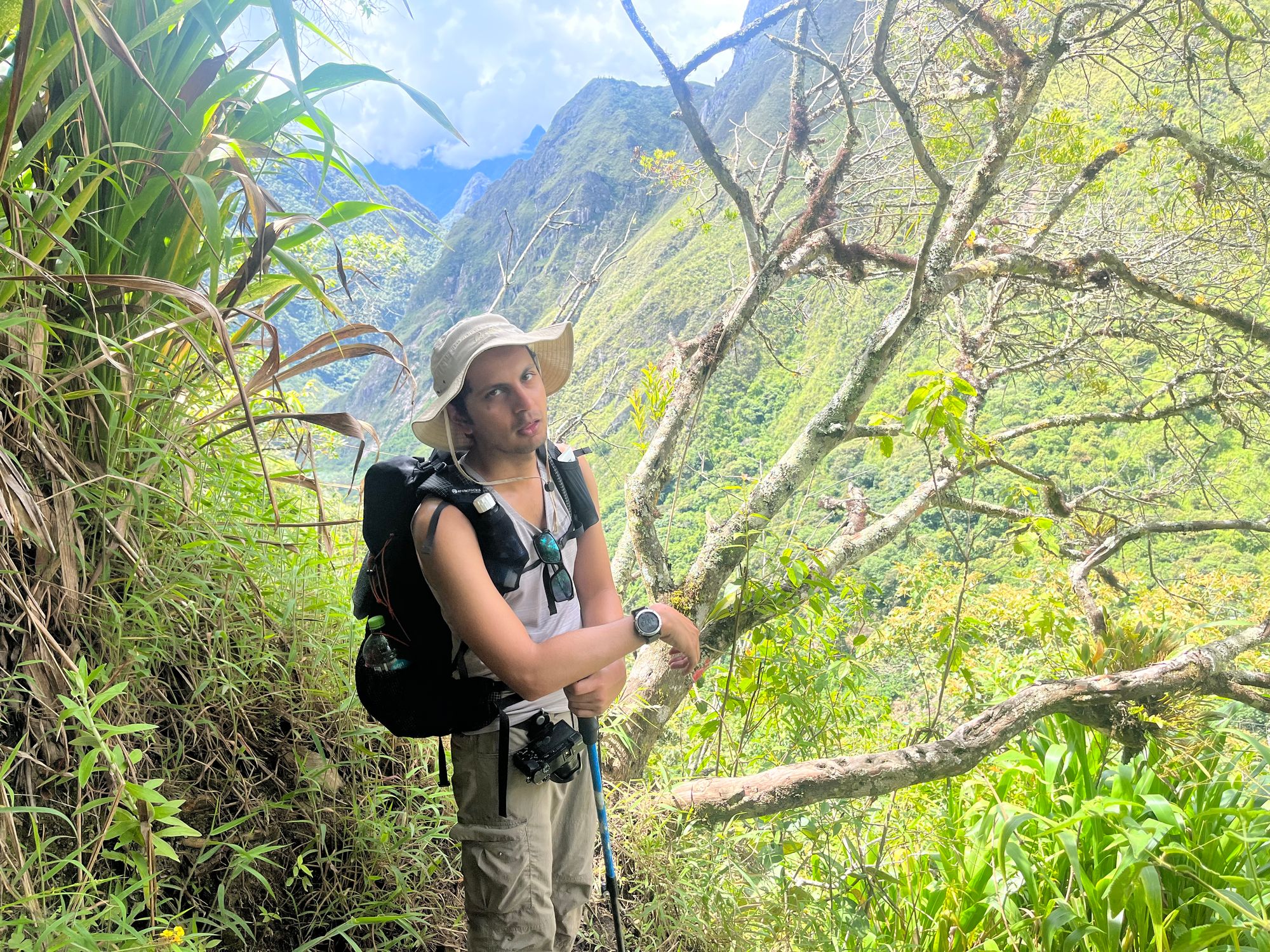
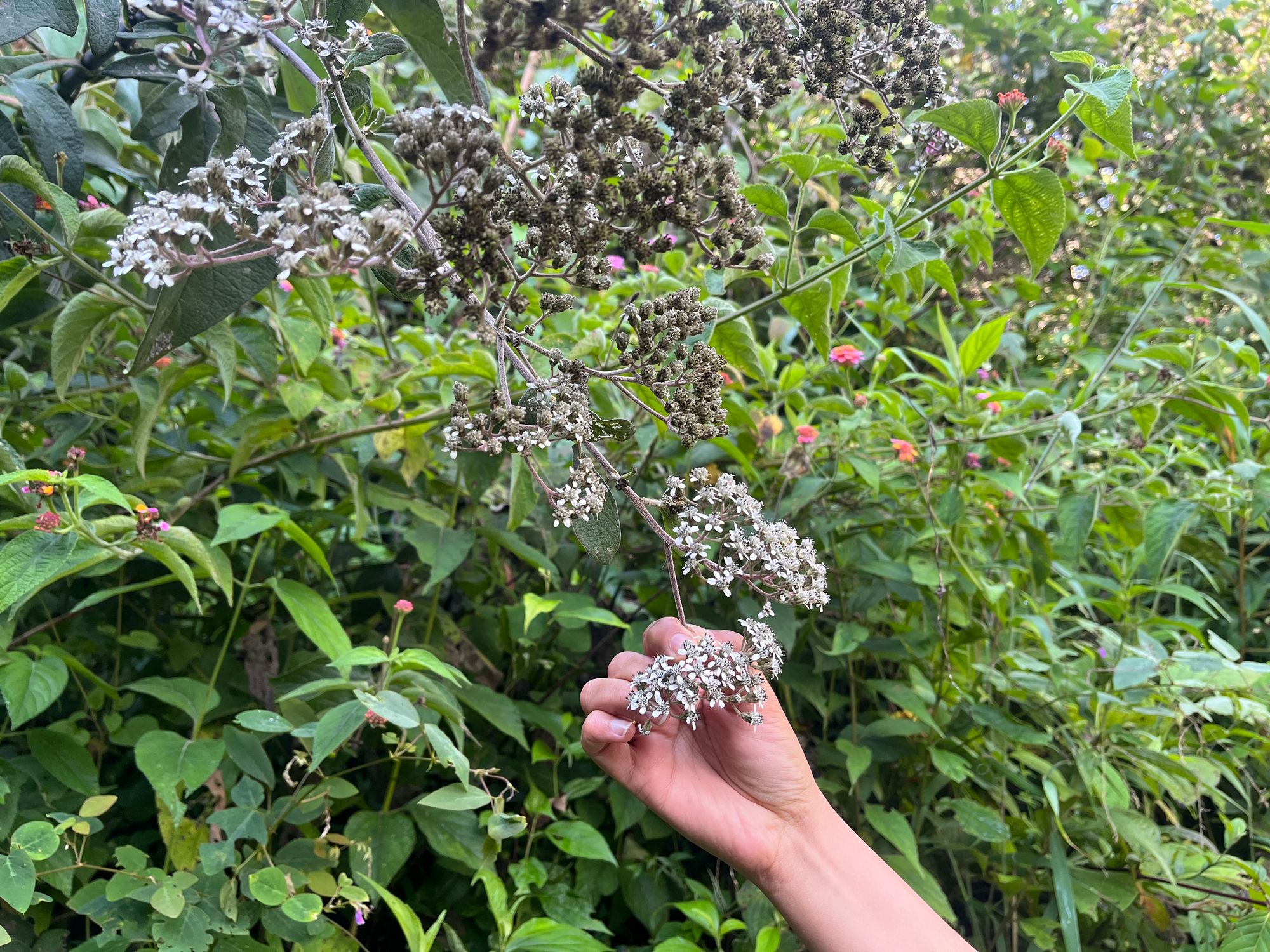
At the end of the forest is a sign welcoming you to the Historic Sanctuary of Machu Picchu, a short walk from where you are required to sign in a registry. Soon after we are in Hidroelectrica, where the Peru rail, the train carrying day trippers to Machu Picchu runs from. On either side of the rail tracks you will find shops and restaurants, we decide to treat ourselves with some hot food for reaching this milestone in our trek.
After lunch, we start crossing the rail tracks walking towards the hotel we have short-listed. Turns out this is no easy feat by any means. Maybe because the exhaustion from walking for four days is finally settling in, maybe because our bodies know the end is in sight, maybe because there is nothing to see for miles on end except rail tracks, somehow it feels like this walk goes on forever. But, we keep putting one foot in front of the other and finally find our way to hotel Mandor. (In case you are wondering, it is not dangerous or an offence to walk on the rail tracks because not many trains cross during the day. There is also plenty of room to walk on either side of the tracks).
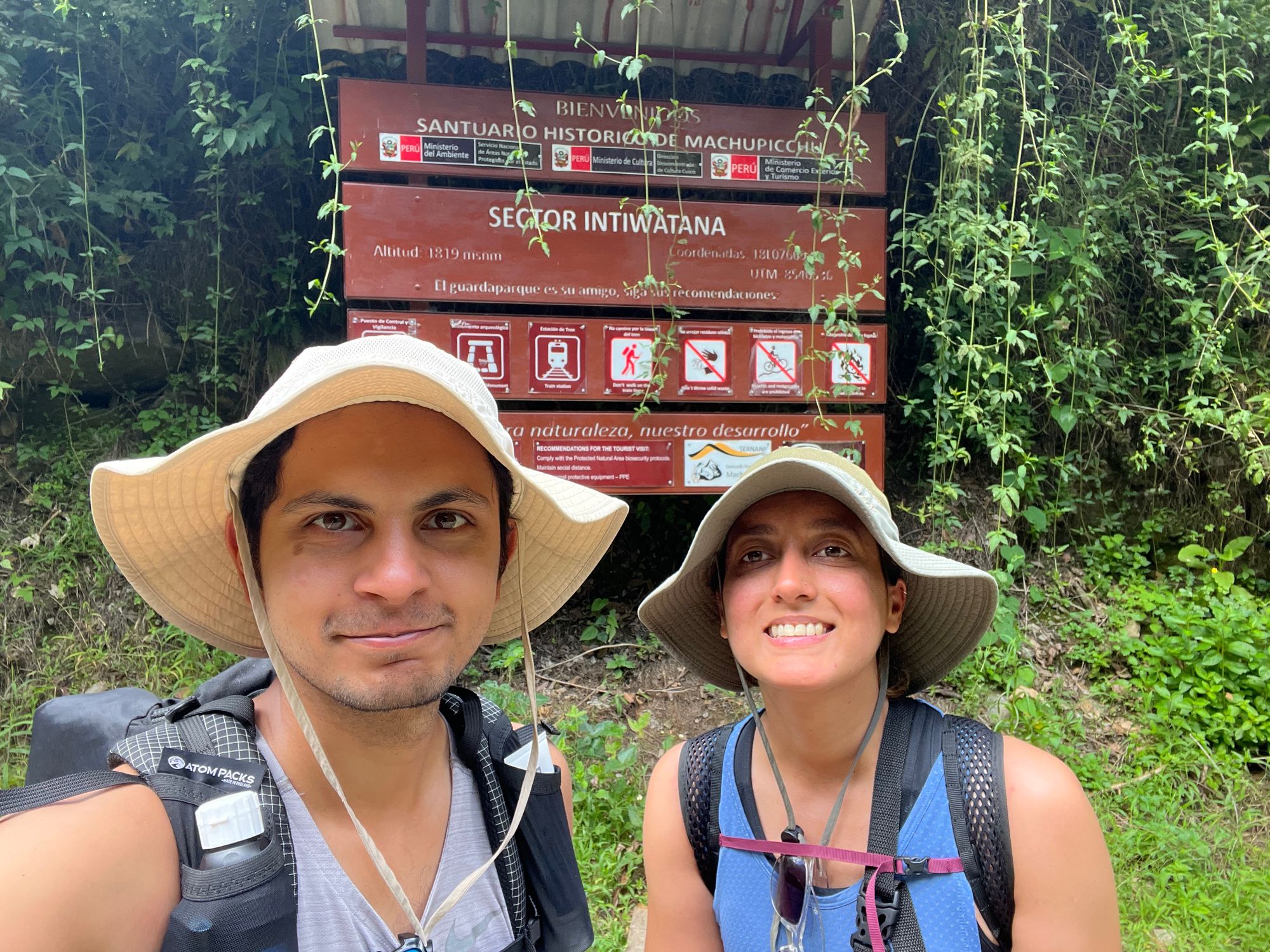
Following advice from the blog, we decide to stay at this hotel and not walk towards the popular destination of Aguascalientes because it is a 30 minute walk to the Machu Picchu entrance gate, which means we can grab our bags from the hotel on the way back to Cusco. The hotel is not the cheapest we have stayed at during this trek and nor the most comfortable, but the hosts are friendly. After a quick shower and dinner we pack for our last day of the Salkantay trek. The thought of what tomorrow may hold is absolutely gripping and I am barely able to catch any sleep.
Day 5 - The ancient city of Machu Picchu
More than 300 years have passed, it is the year 1911, Harry Bingham, a professor from Yale is searching for Manco Inca's lost city of Vilcabamba and accidentally stumbles upon Machu Picchu. A city that was hidden from the modern world is intact, atop the mountains, a singing testimony of its glorious yet tragic past.
We have tickets to enter the site at 06:00am which is the earliest entry slot. In order to reach the Machu Picchu citadel, you can either take a pre-booked bus or walk 1700 steps up a flight of stairs. Of course, we are walking.
We leave the hotel with our headlights on at 04:00am and reach the entrance gate for our ticket and passport check at 04.30am. At 04.45am they open the gates and start letting people in. We now have the mammoth task of climbing 1700 steps to reach the gate to the citadel. On little to no sleep and in pitch black we slowly make our way up the giant steps. It takes us a total of 40 minutes to complete the feat. The first few hundred steps are the hardest, and I keep thinking to myself, what have we gotten ourselves into but soon the legs get used to putting one foot in front of the other, and climbing becomes a breeze. With almost rhythmic movement we dance our way to the top.
Once at the gates, we undergo another security check, hire a guide (you can find many local guides outside) and enter the site. It is still foggy at 06:15am when we enter but soon the clouds start to disappear and we see Machu Picchu emerging from the fog.
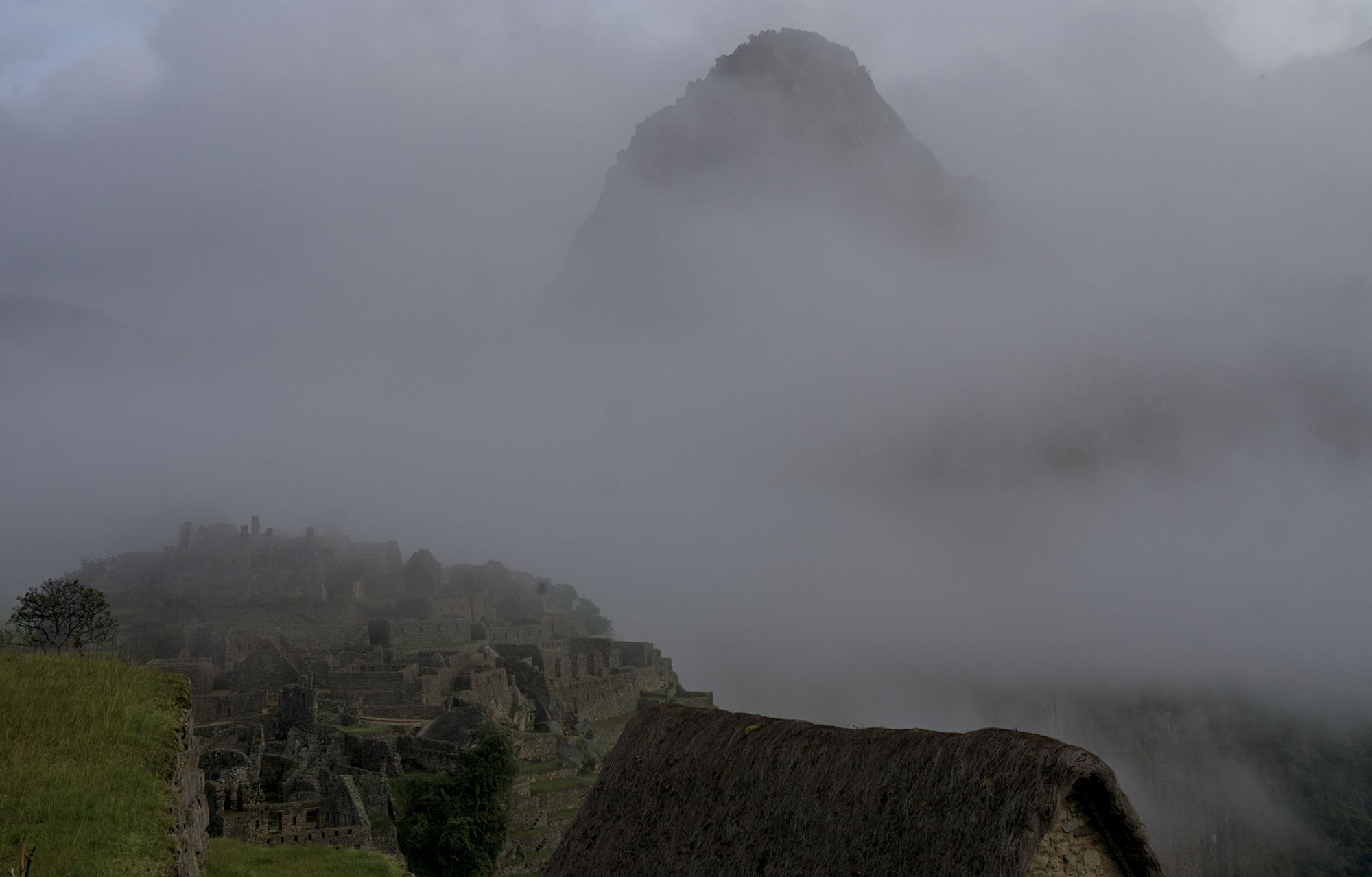
When I first see Machu Picchu, words fail me. I am too moved to comprehend anything. Amidst the crowds that have started to gather and our guide ushering us along, it is impossible to take my eyes off of the citadel. Even when surrounded by people, I can feel my heart beating against my chest, I can hear the sound of my breathing and on this cold, chilly day, I feel a warmth glowing inside of me. All I know is that I am happy to be alive in that moment to witness this spectacle.
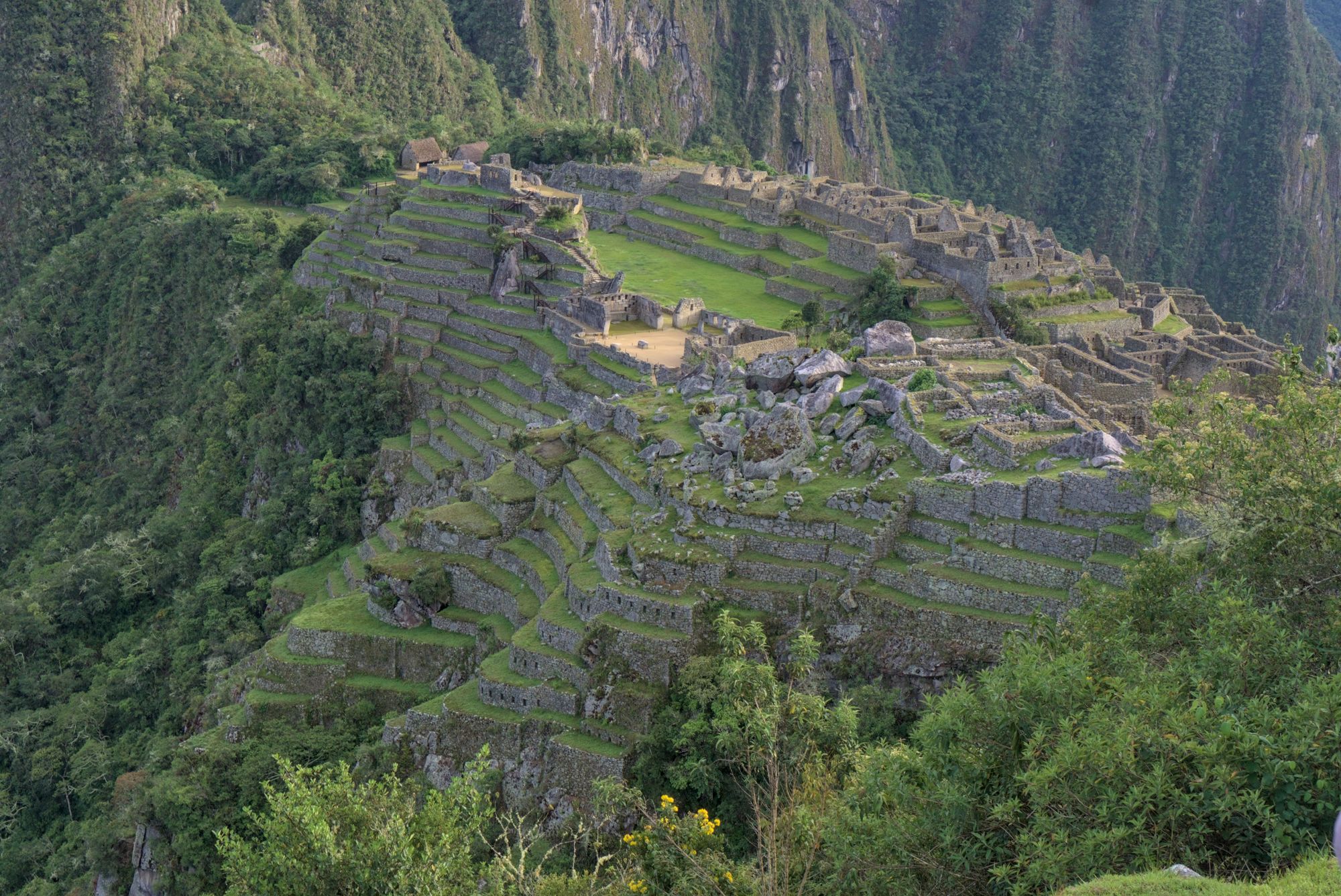
I try to picture how Harry Bingham must have felt when he first came upon the ancient city or what was it about Machu Picchu that inspired Ernesto “Che” Guevara to start a revolution.
I try and reflect on my experience of walking through the Salkantay trek over the past four days. Reading about and thinking of the plight of the indigenous Inca people and how bravely they must have fought against the conquistadors, I have felt hurt.
Remembering the impressive Inca ruins and how they have been destroyed by the Spaniards for their own gain, I have felt anger.
Now as I walk through different areas of the citadel and look at the stonework and carved terraces, I feel admiration.
As I listen to our guide narrating accounts of the Inca people, talking about their cultural and religious practices, I feel inspired.
After spending two hours at Machu Picchu absorbing the magic and sharing this experience with Munis, I leave the site feeling grateful.

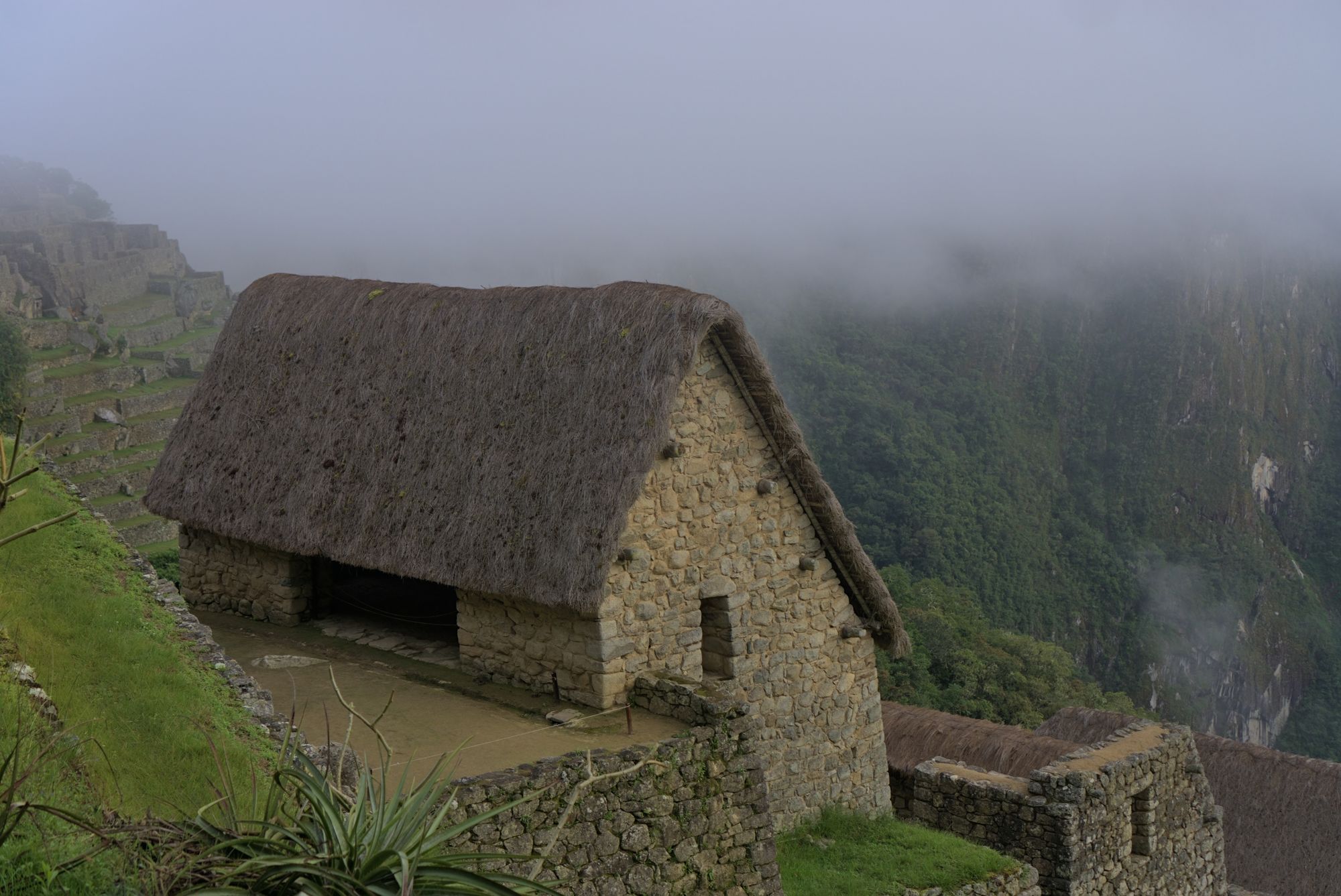
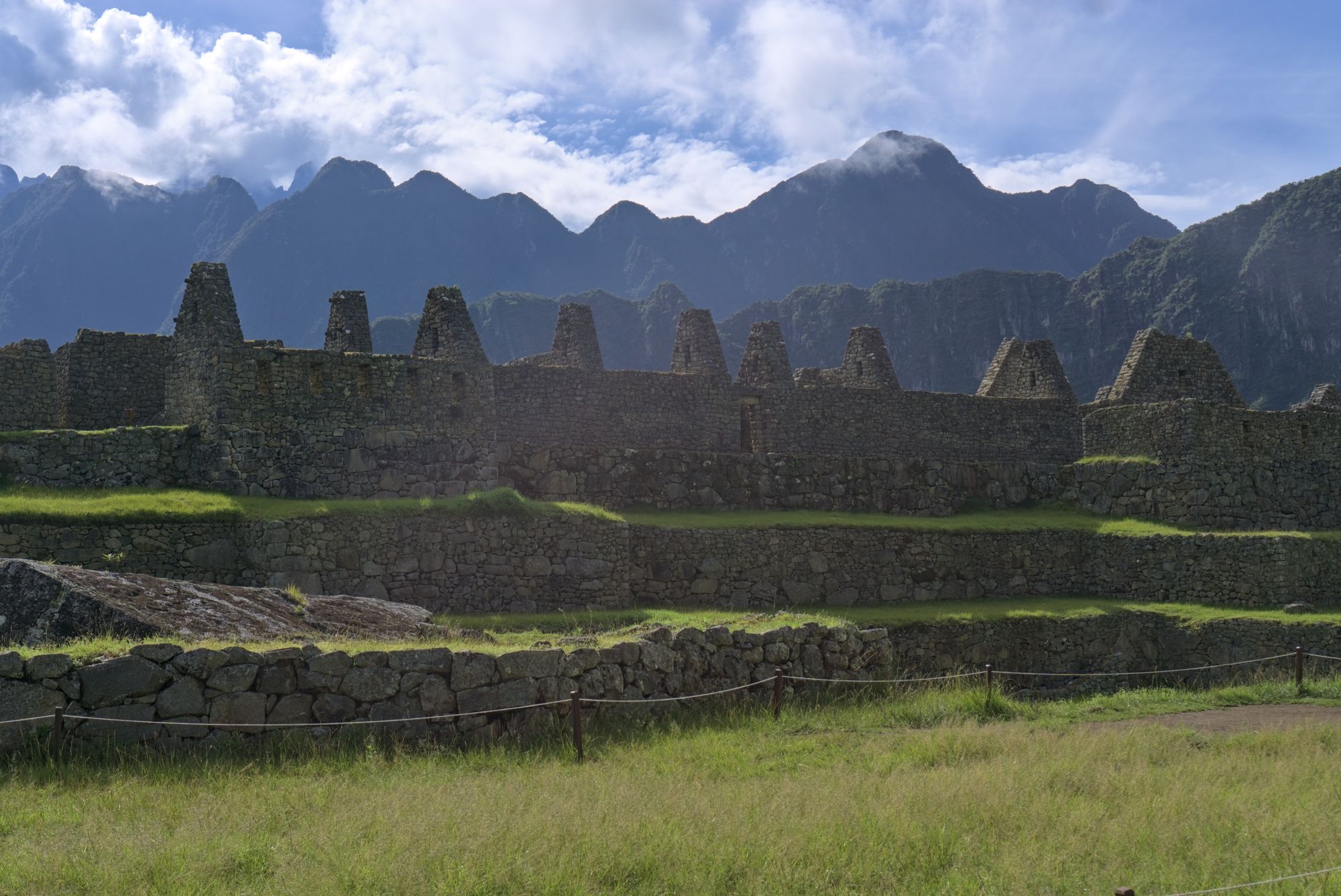
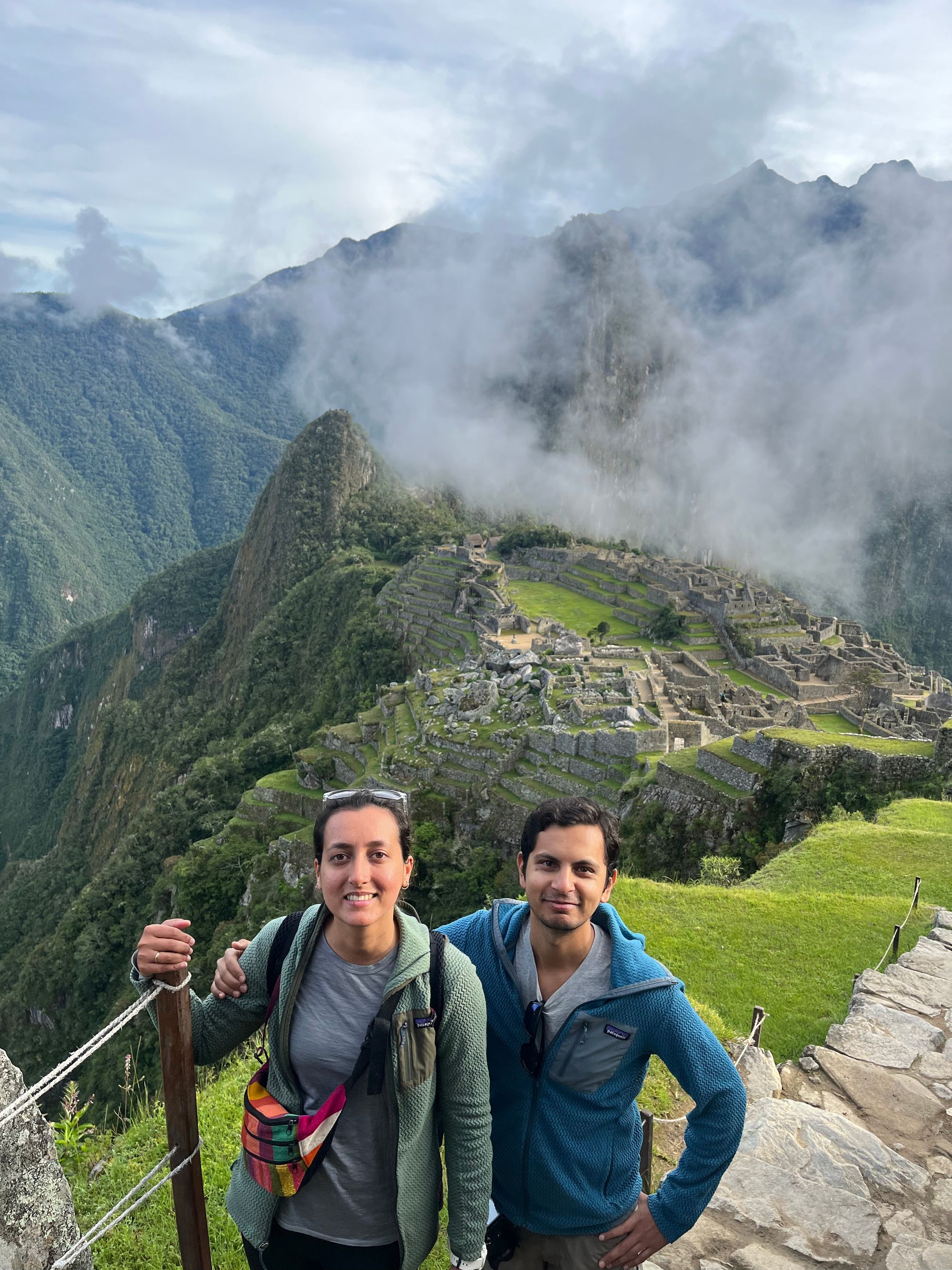
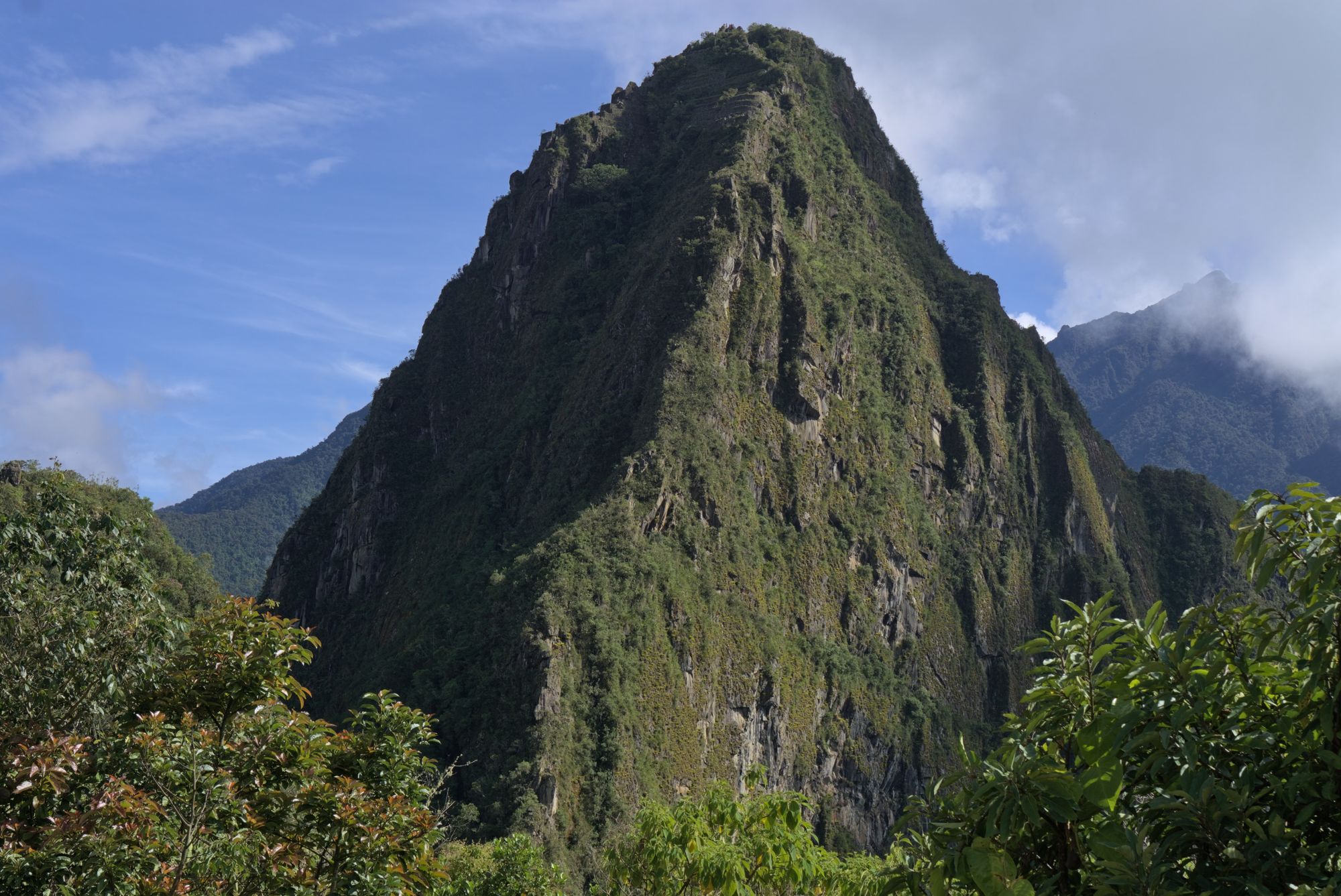
On our way back to Cusco, we grab our bags from the the lodge, cross the rail tracks again to reach Hidroelectrica from where we are able to book a bus back to Cusco on the spot. The bus ride is the most exhausting part of our entire journey, which is saying something considering we have just walked for five days. The bus goes very fast on narrow irregular roads, I feel nauseous on most bends and try to catch some sleep the rest of the way. It takes us close to 7 hours to reach the city. Once back in Cusco, we check into our hotel, grab dinner and drift off to sleep.
If reading through this blog has piqued your interest even a little bit, I would encourage you to watch the following documentary on YouTube about the Incan Empire.
References:
- Puente, J (2014, Aug 12). Sacsayhuaman: Ruins of a Magnificent Inca Fortress. https://www.peruforless.com/blog/sacsayhuaman/
- N.A (2022). Inca Empire: Timeline. https://www.ducksters.com/history/inca/timeline_of_the_inca_empire.php
- Grover S, Lakasing E. The Incas: a journey through history and spirituality. Br J Gen Pract. 2009 Feb 1;59(559):134–5. doi: 10.3399/bjgp09X395175. PMCID: PMC2629829.
- 2. MacQuarrie K. The last days of the Incas. New York: Simon and Schuster; 2007. [Google Scholar]

